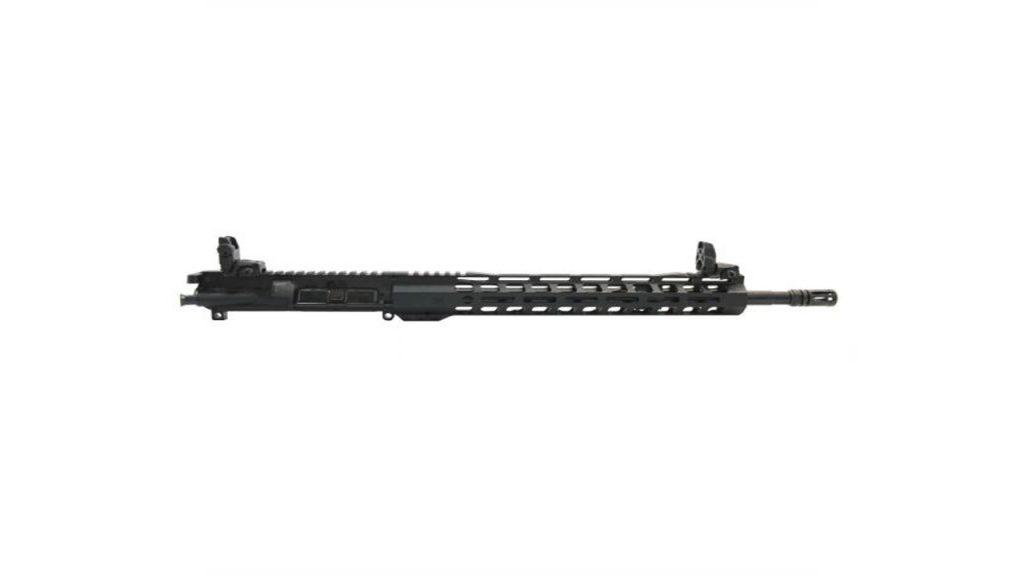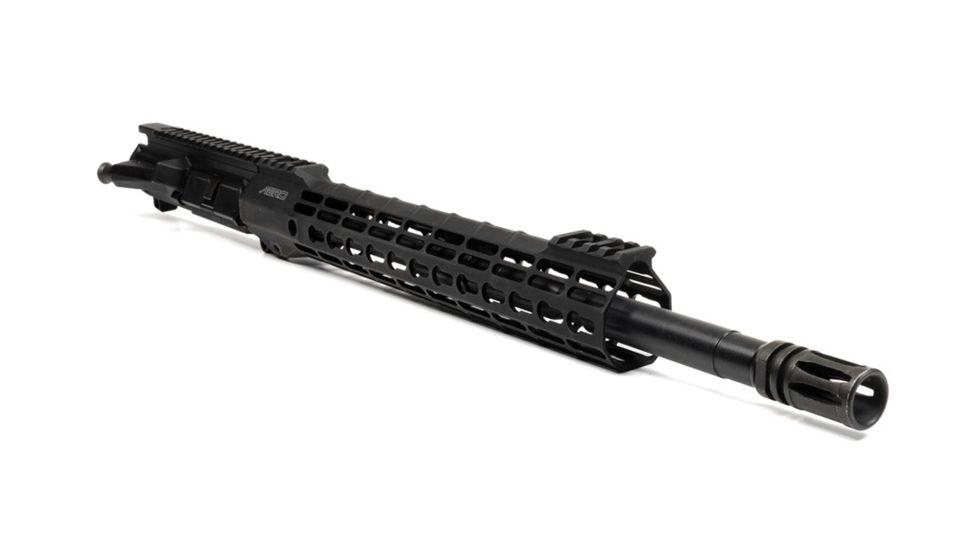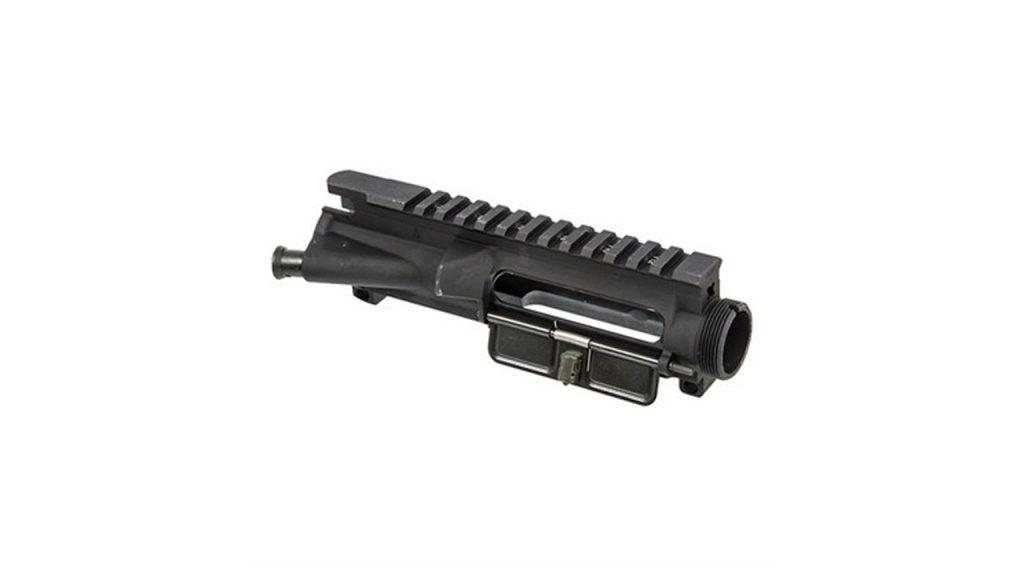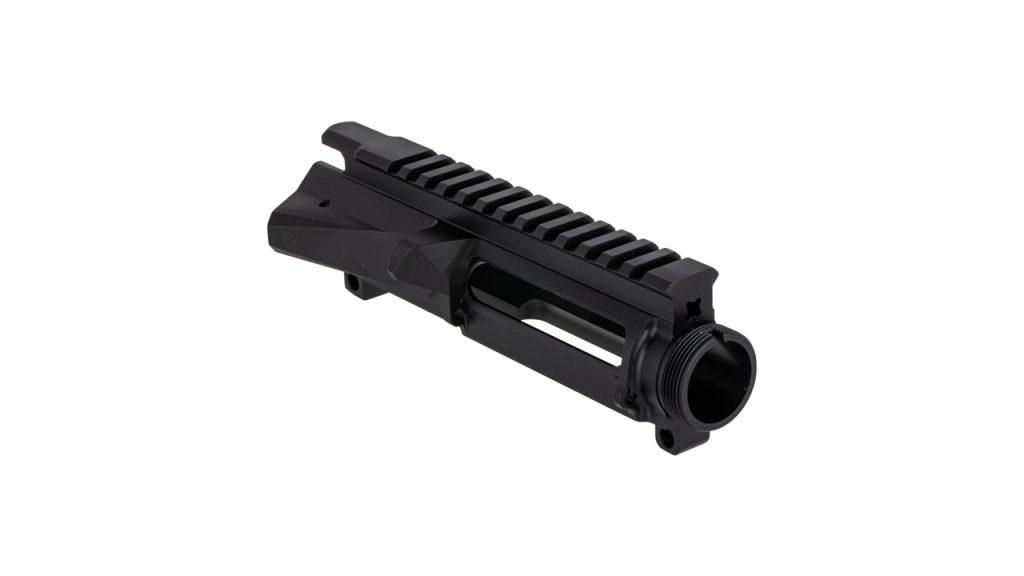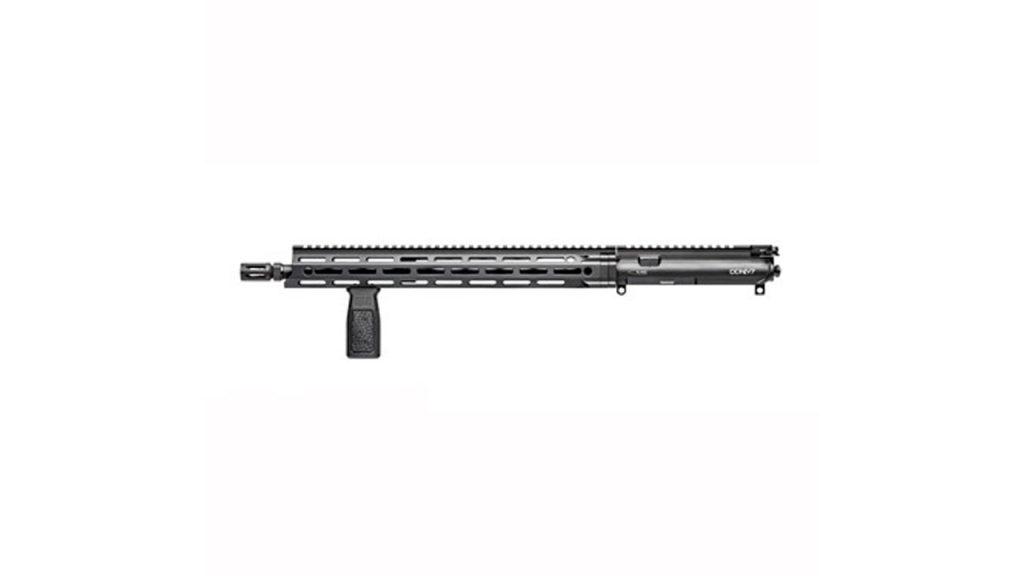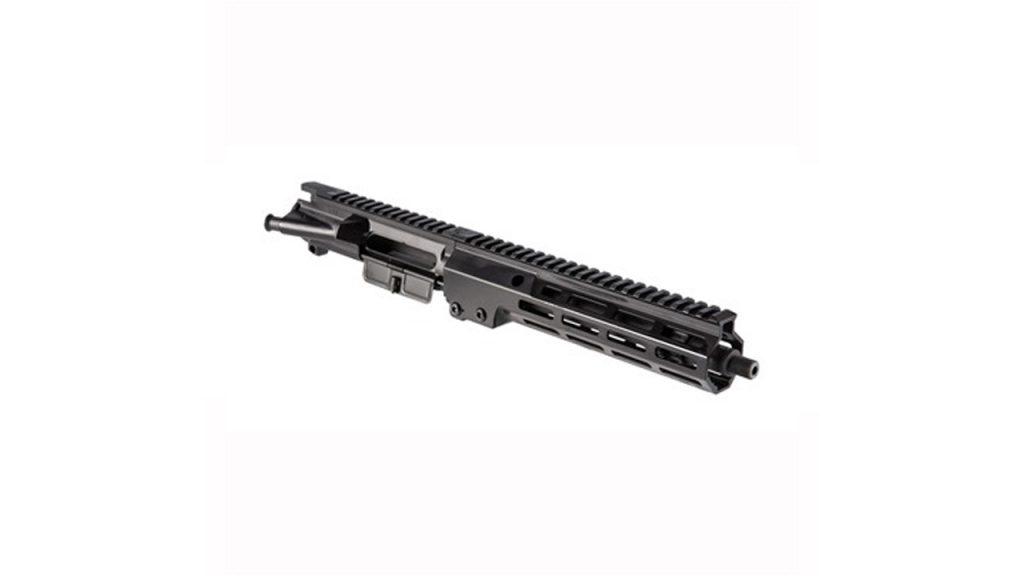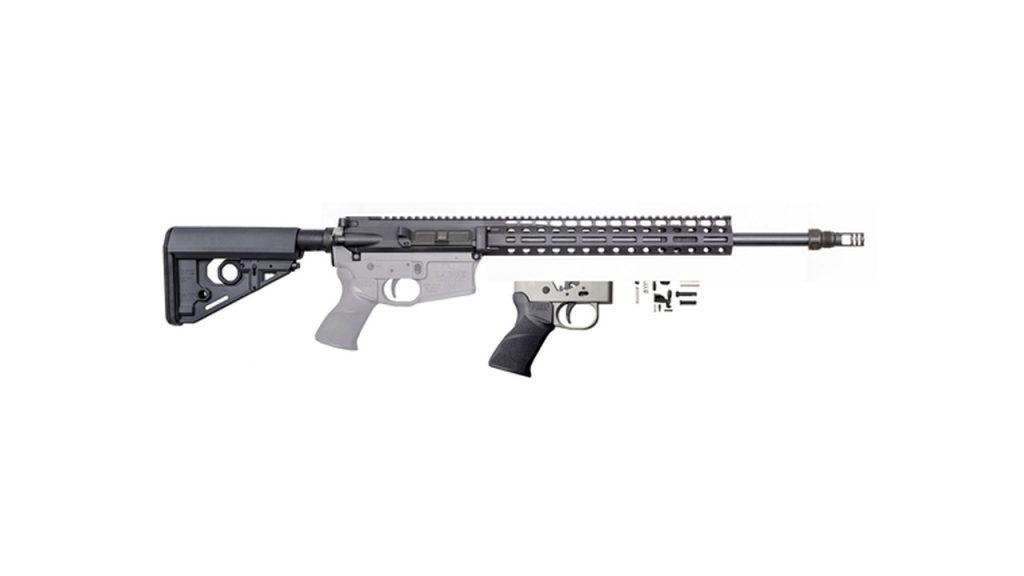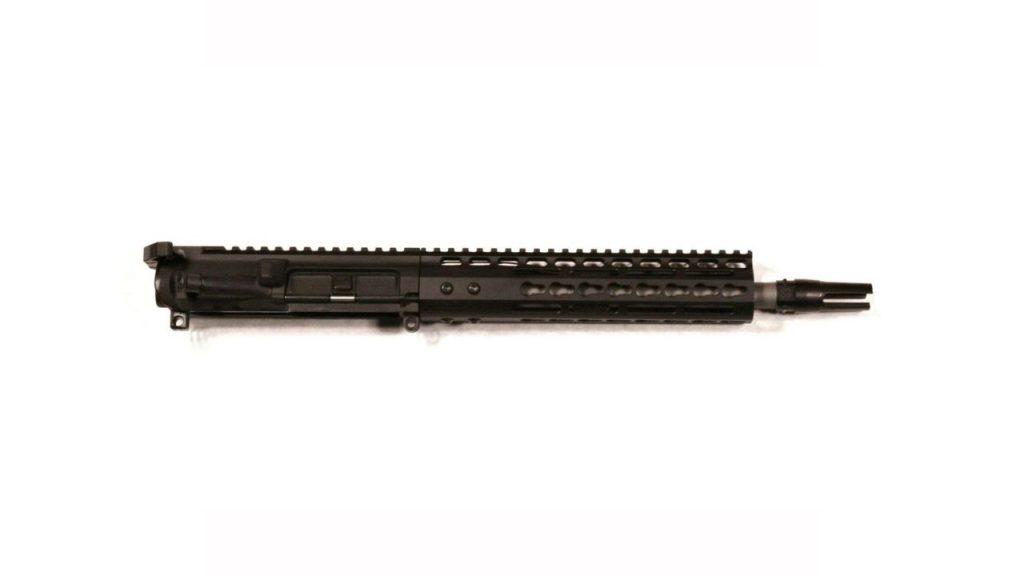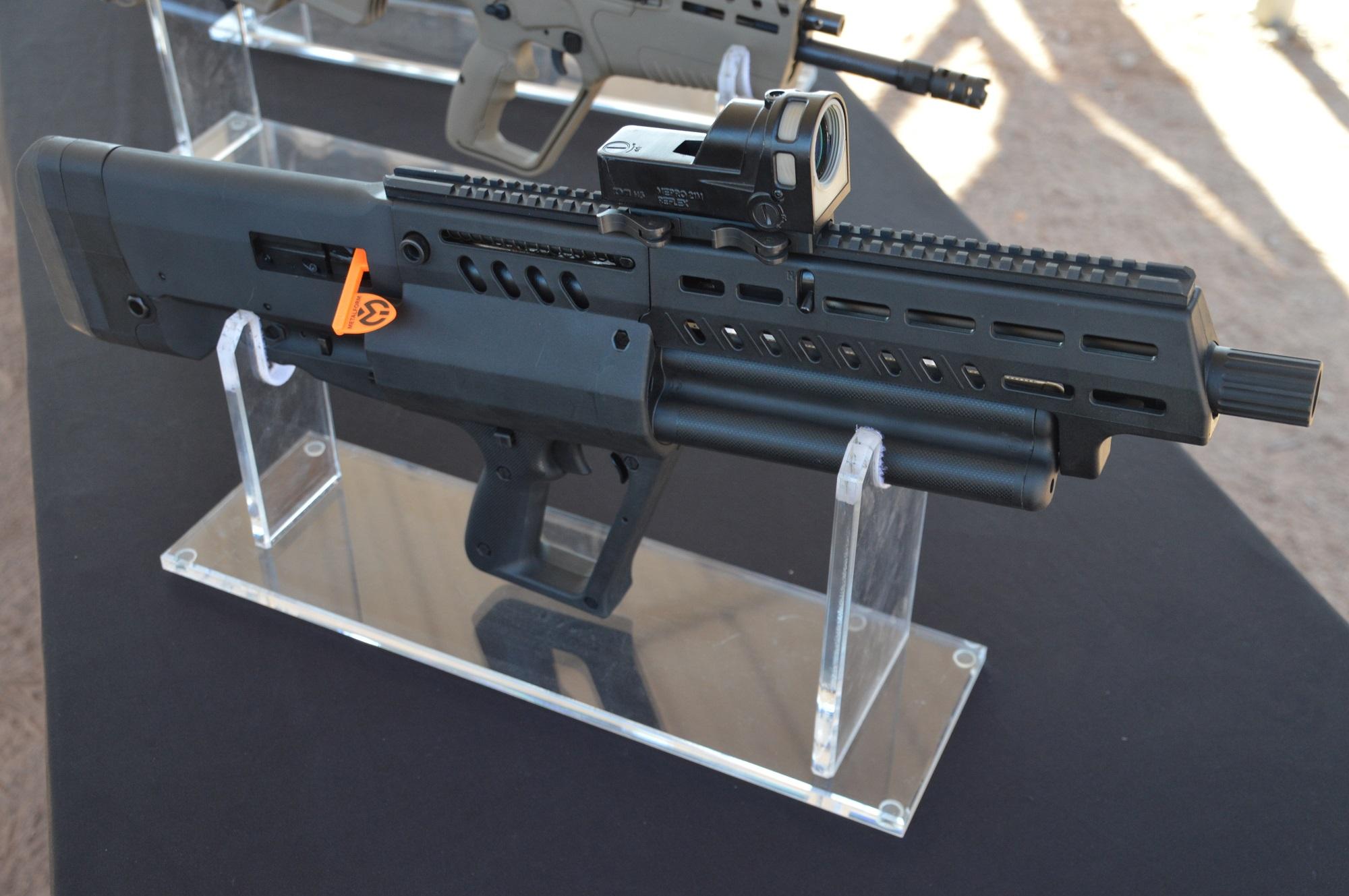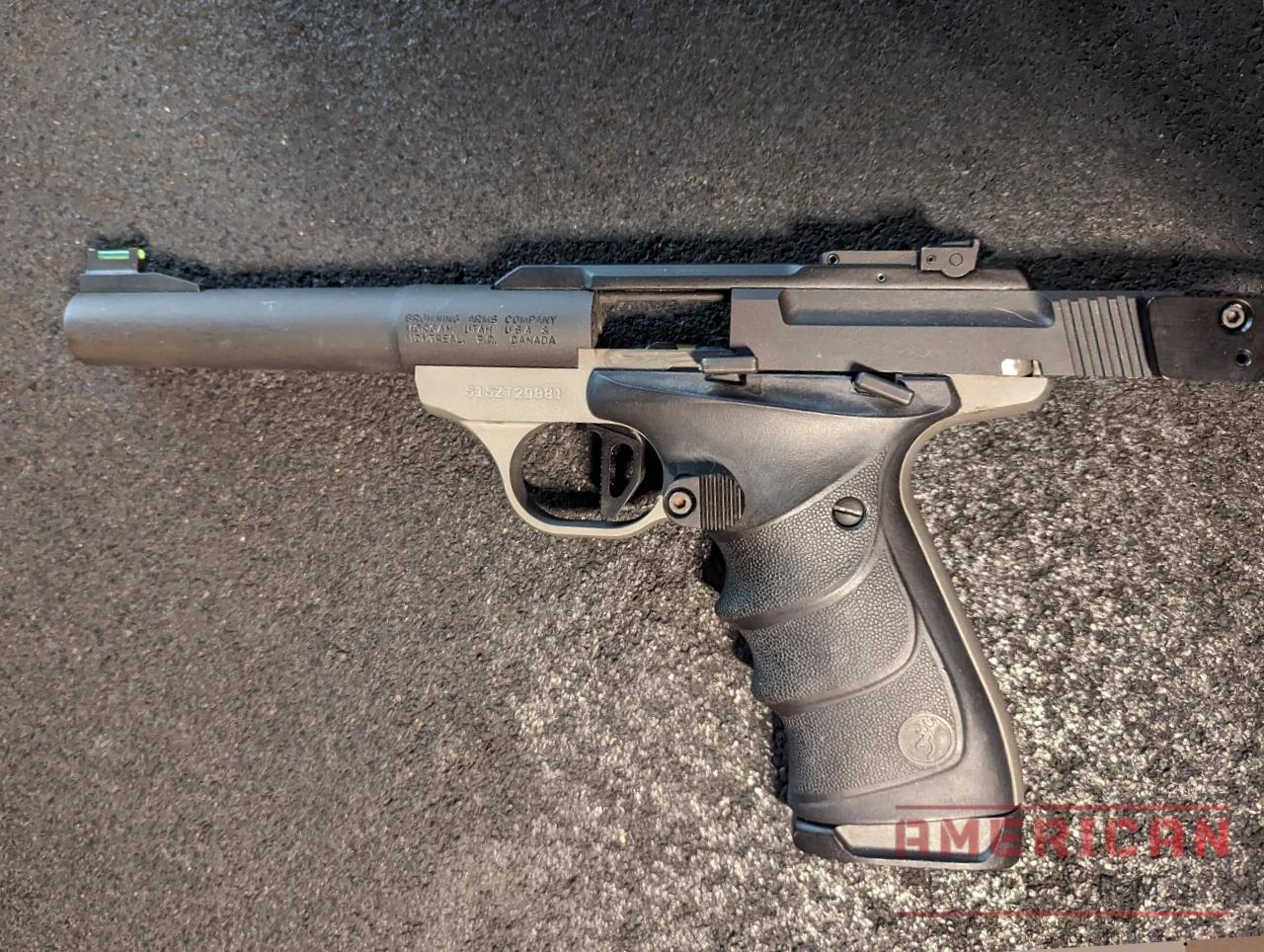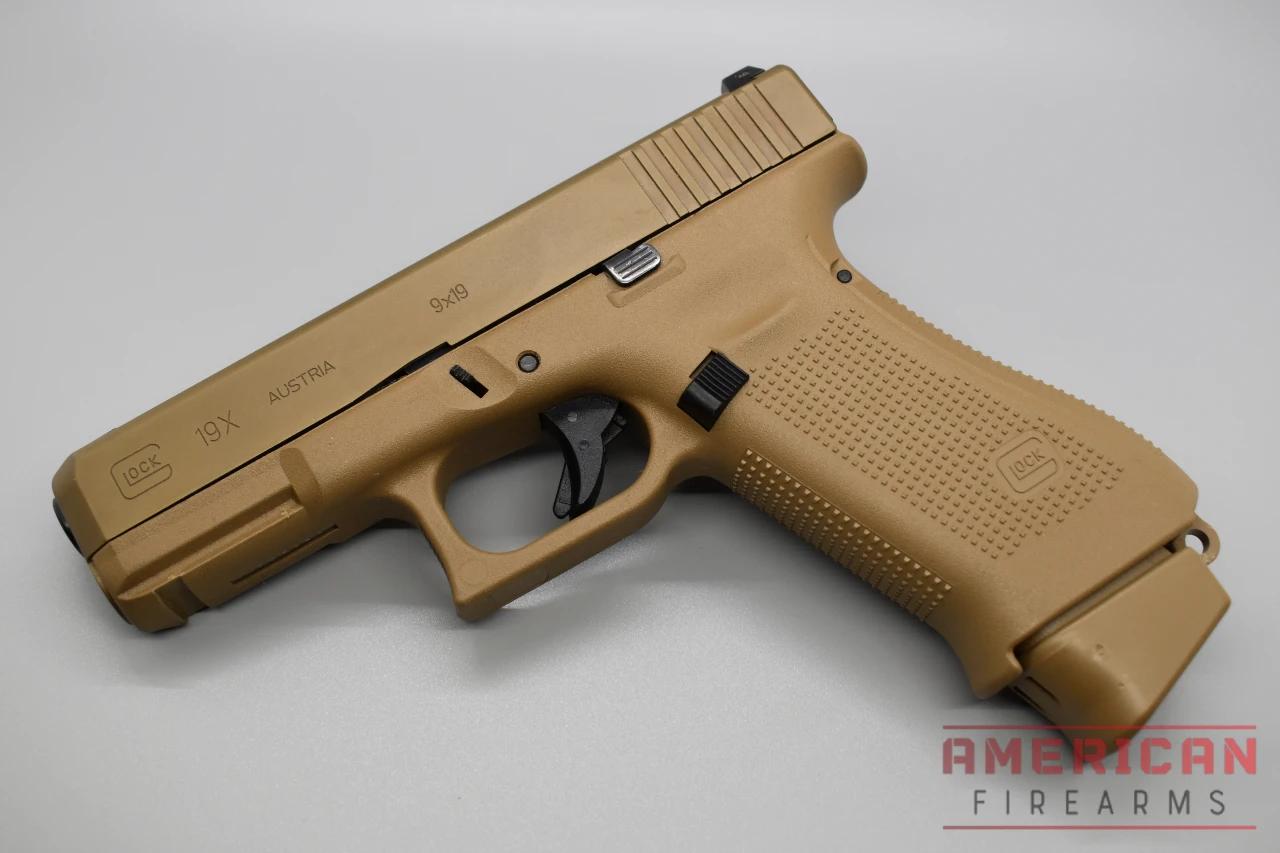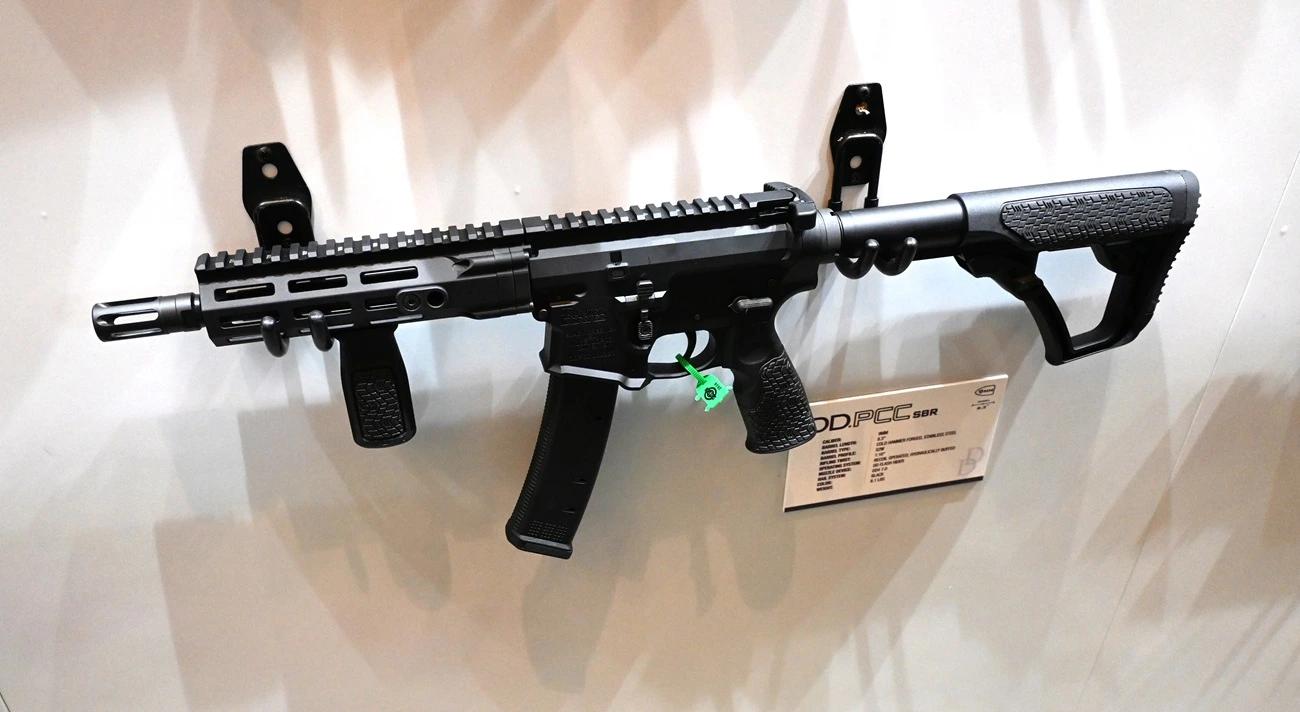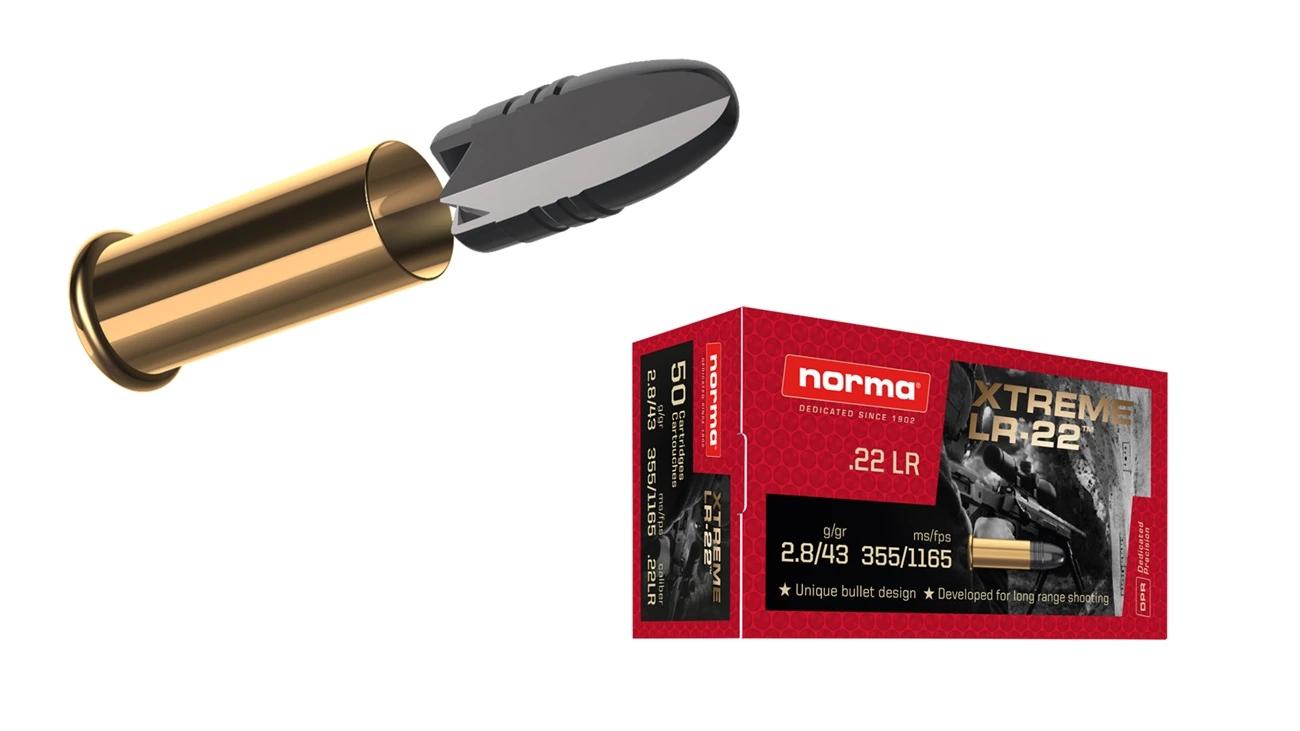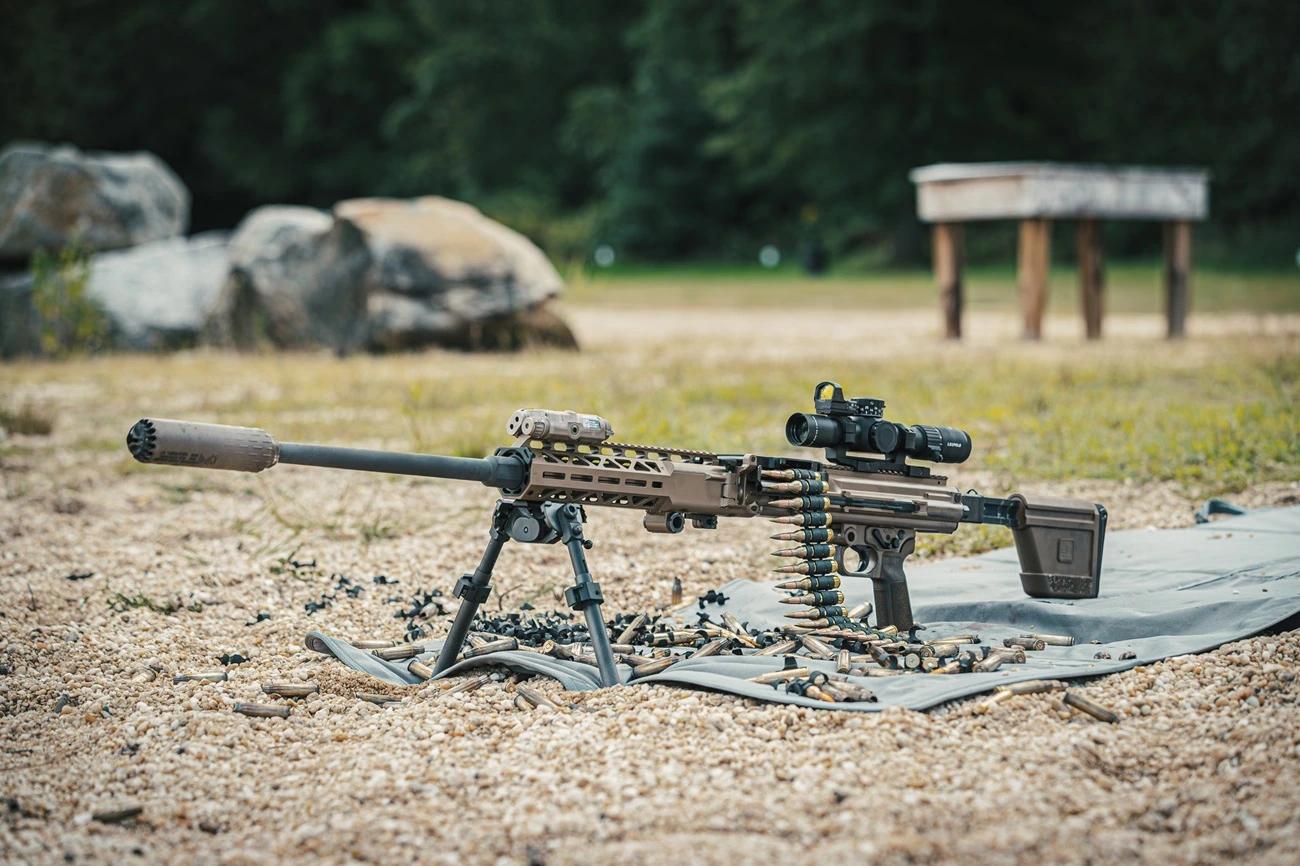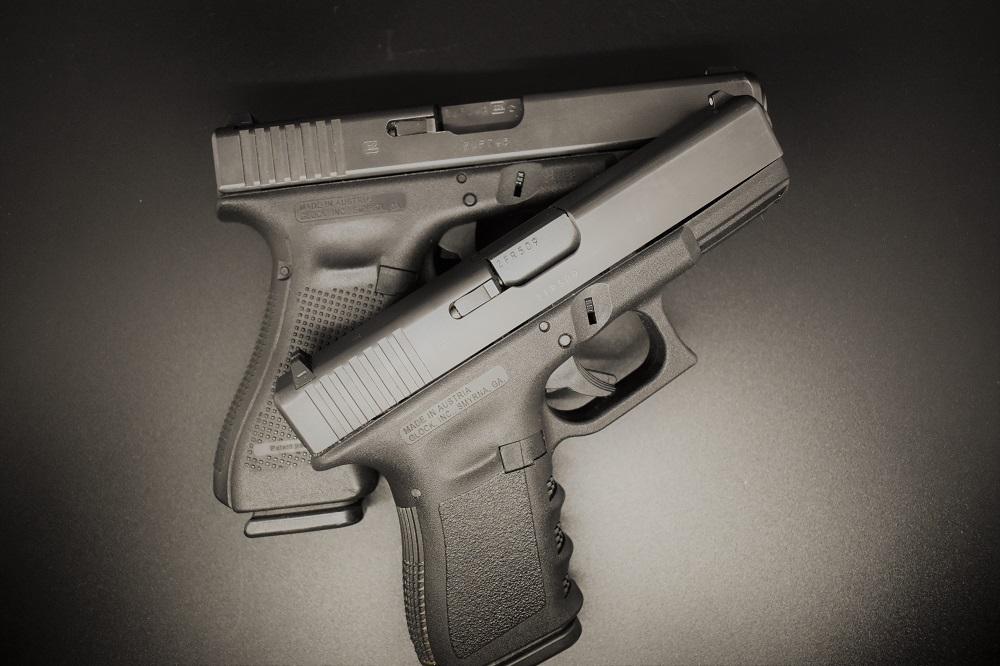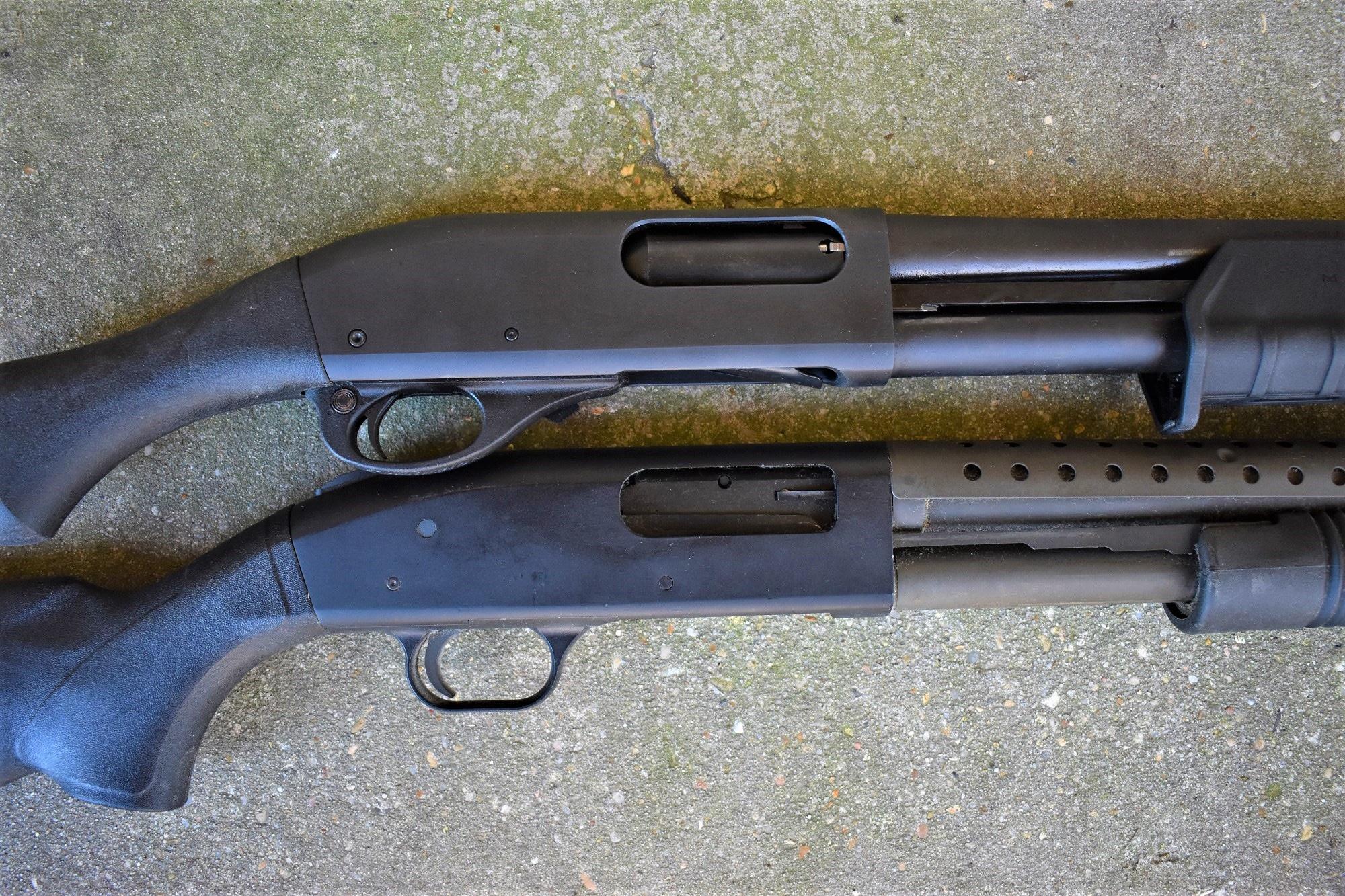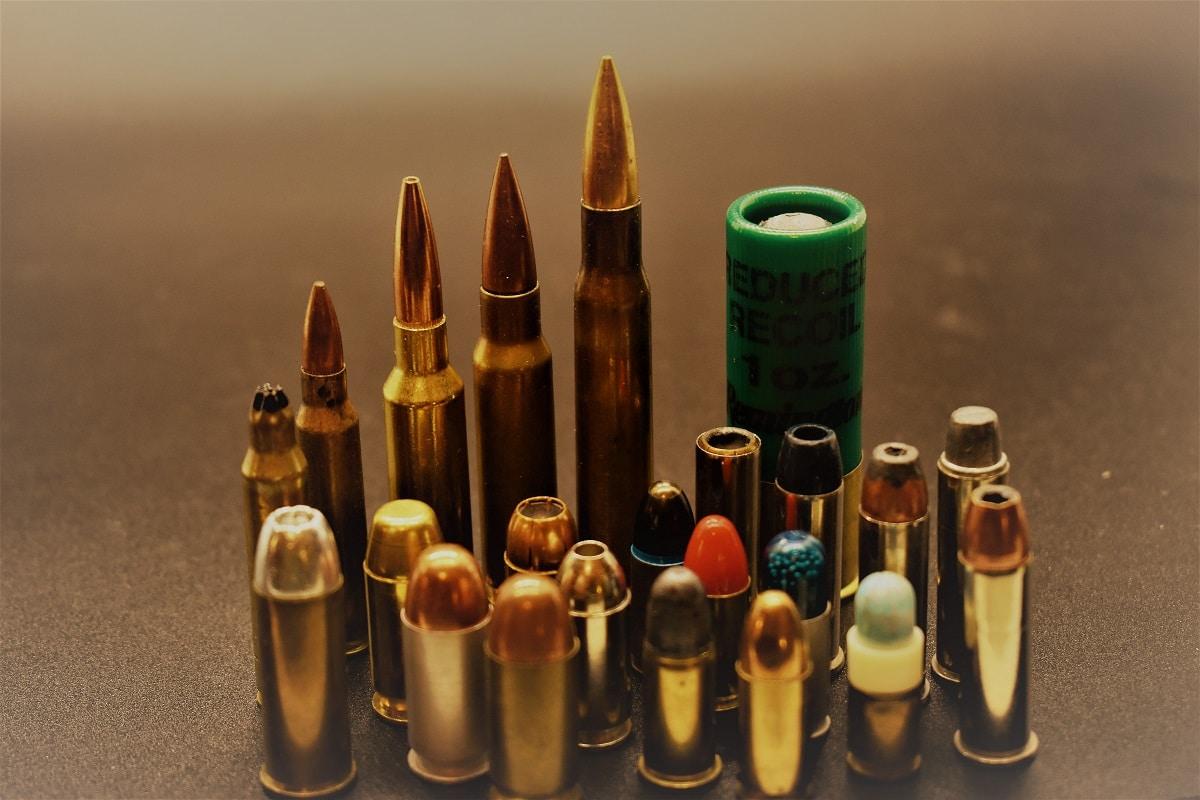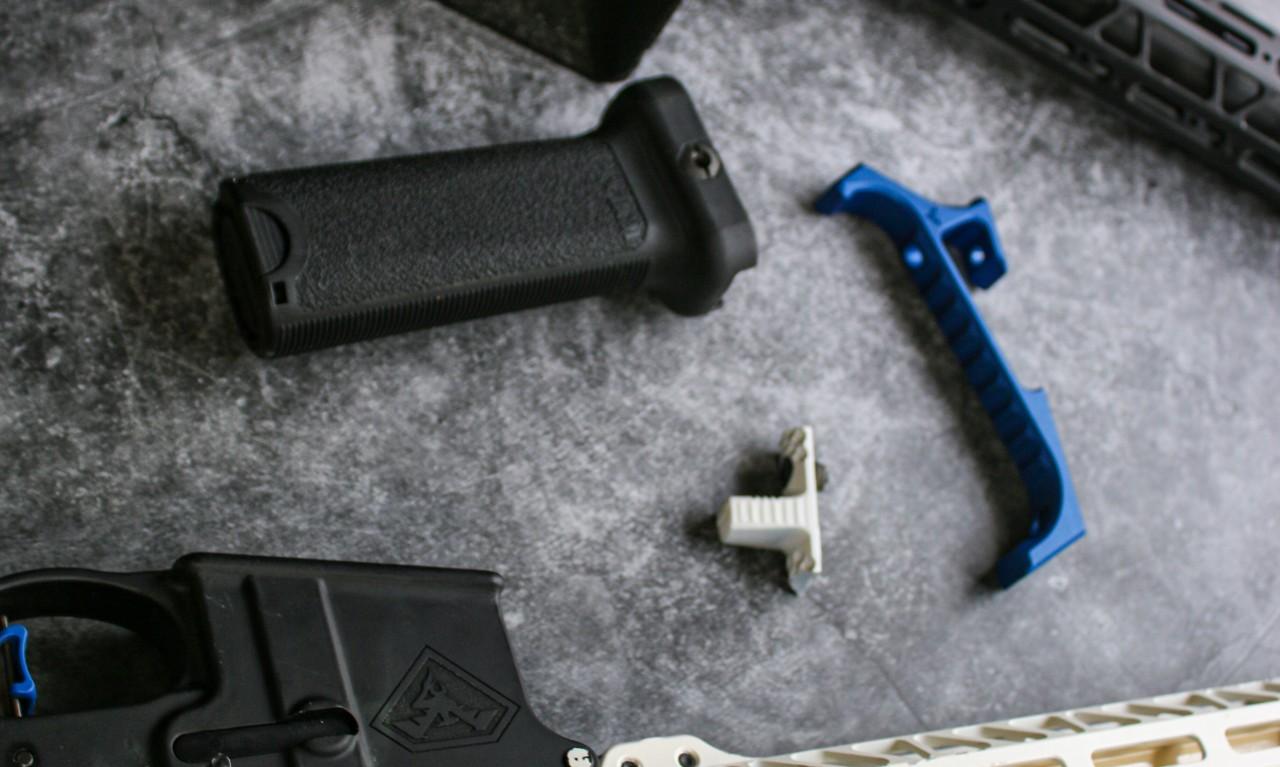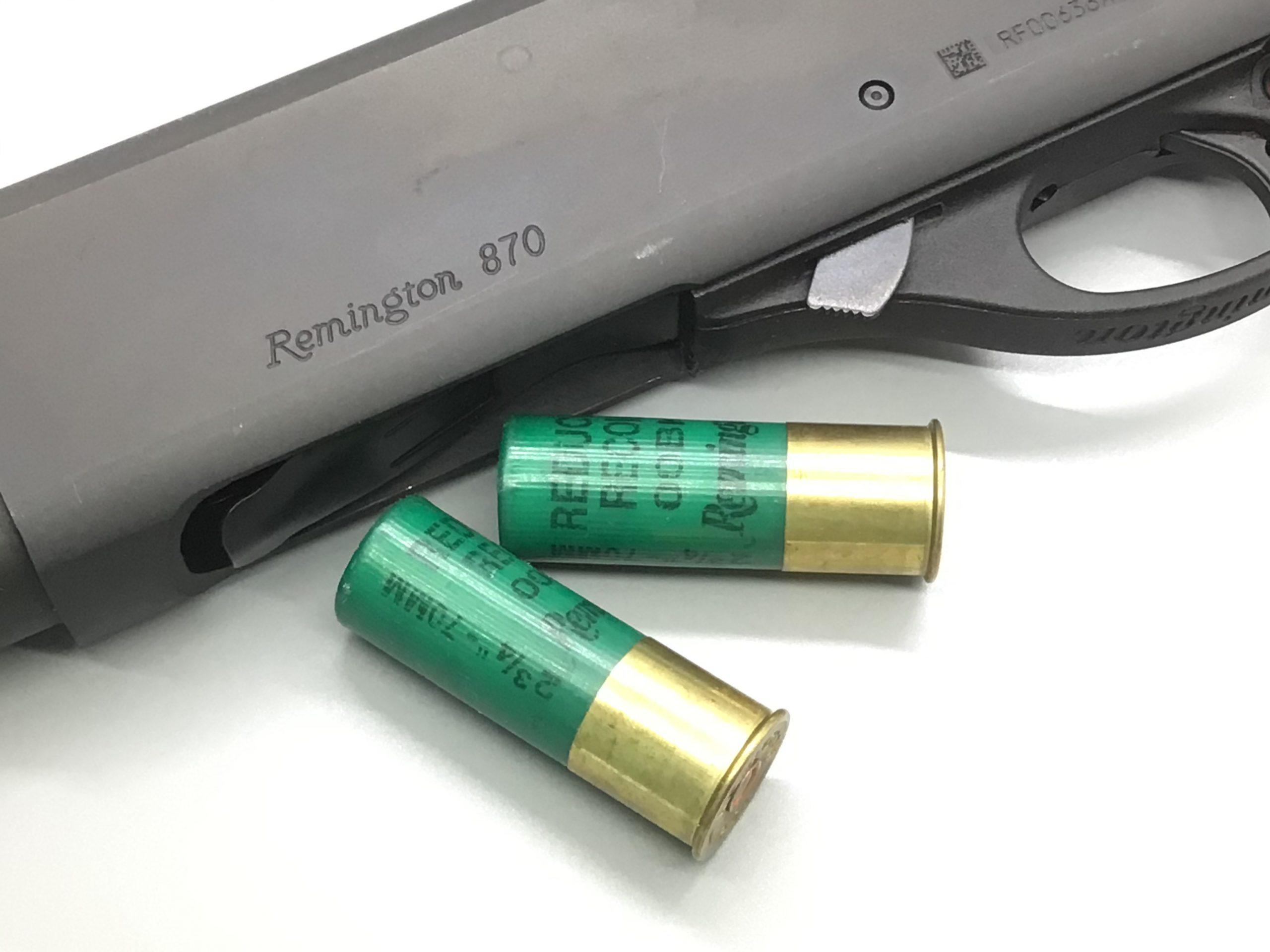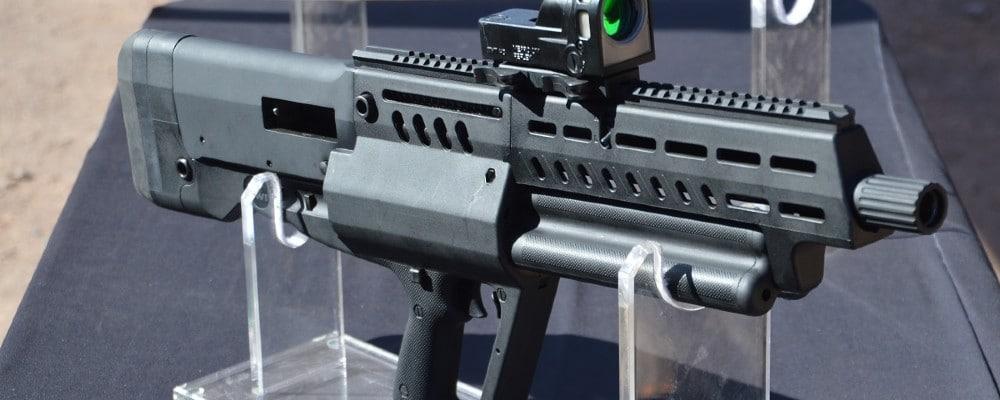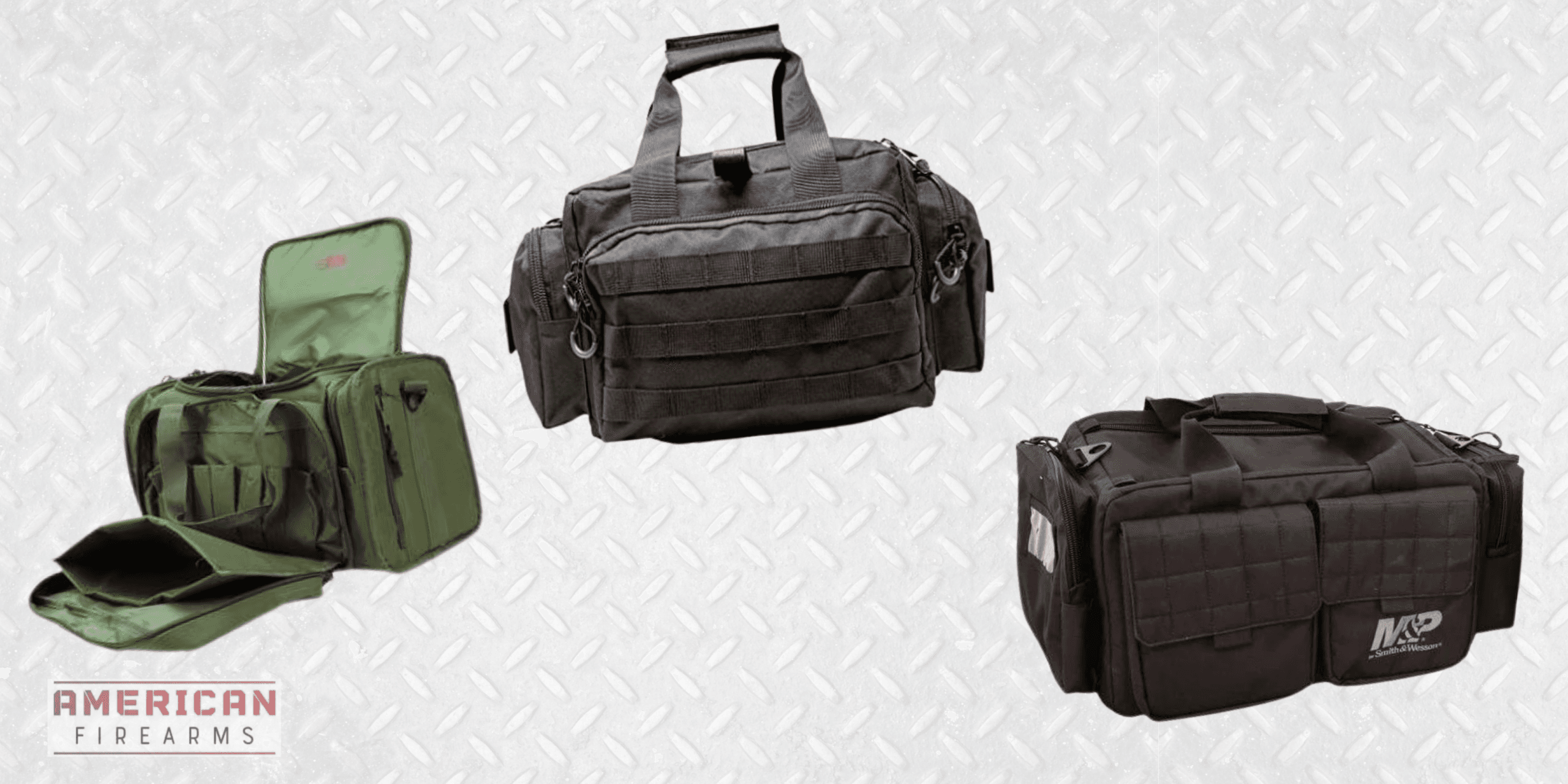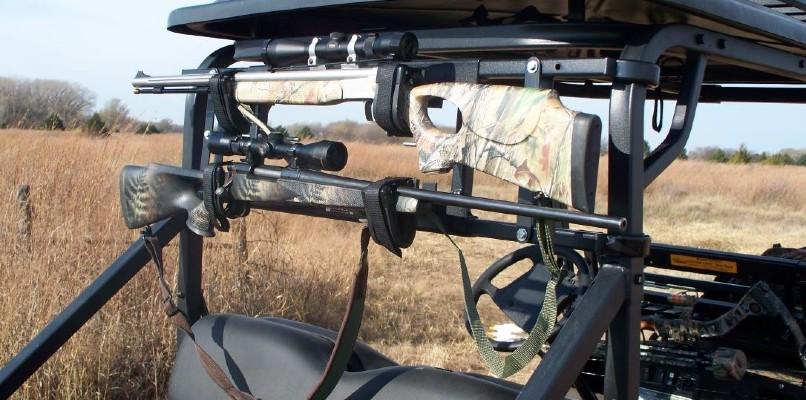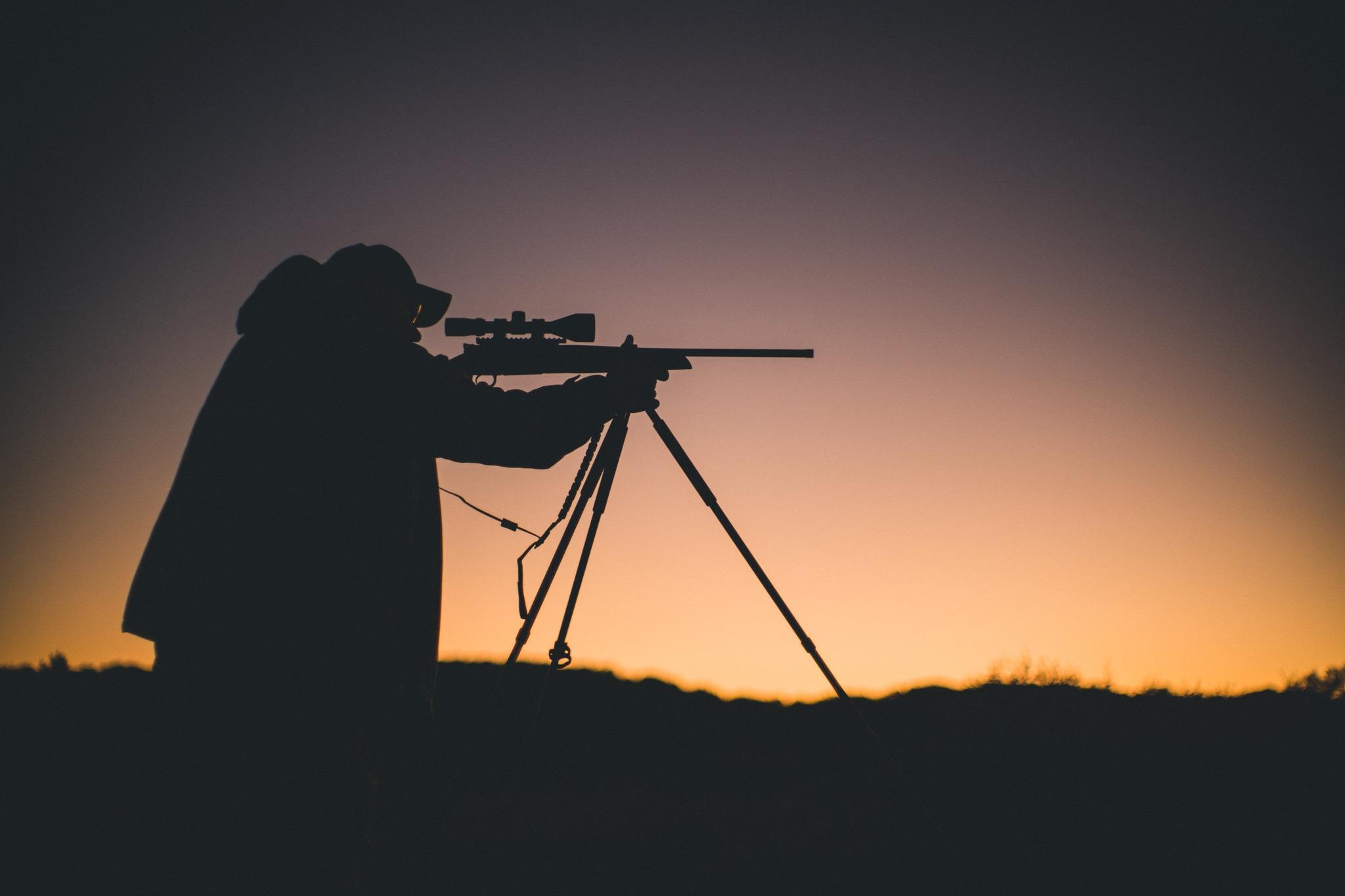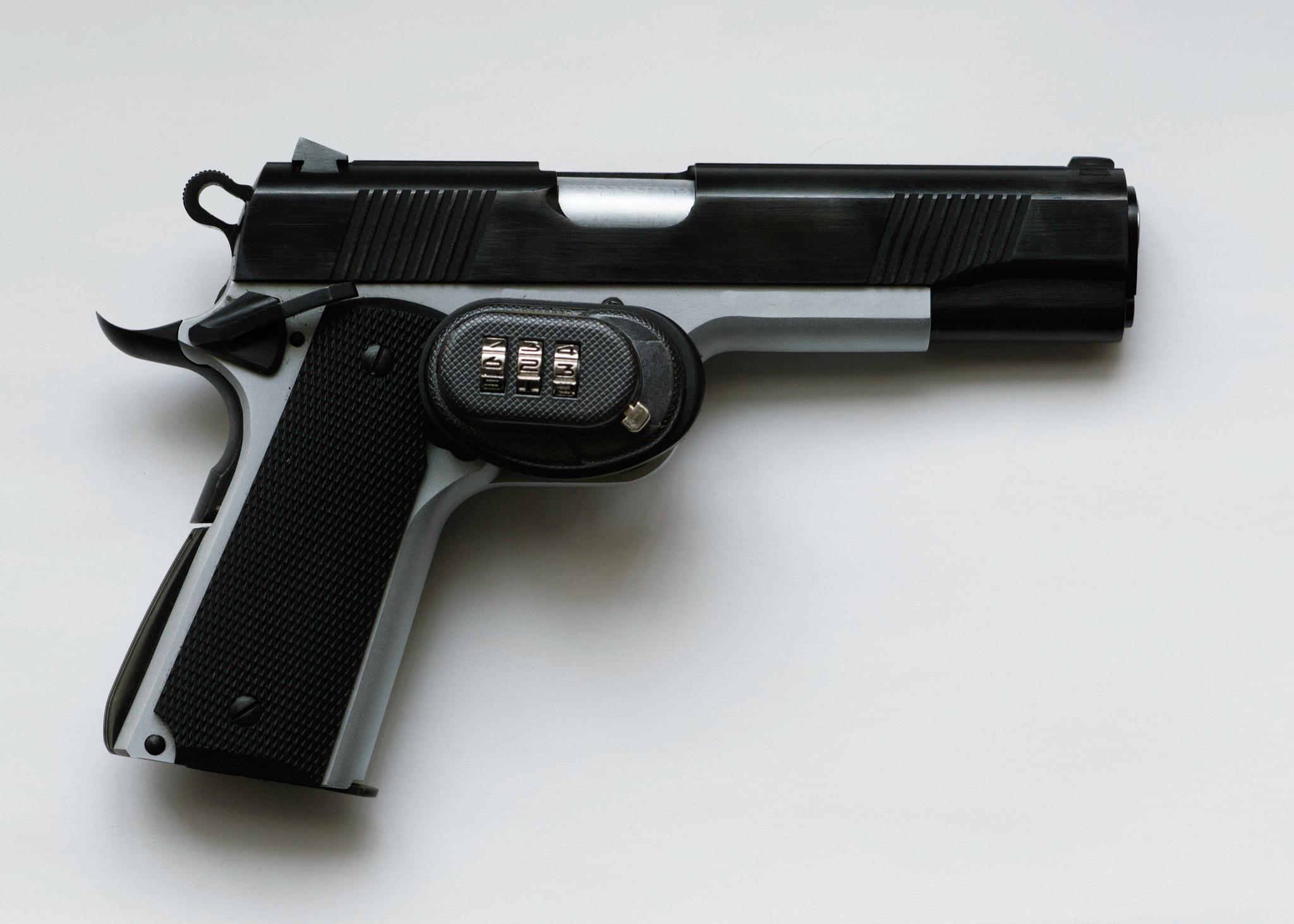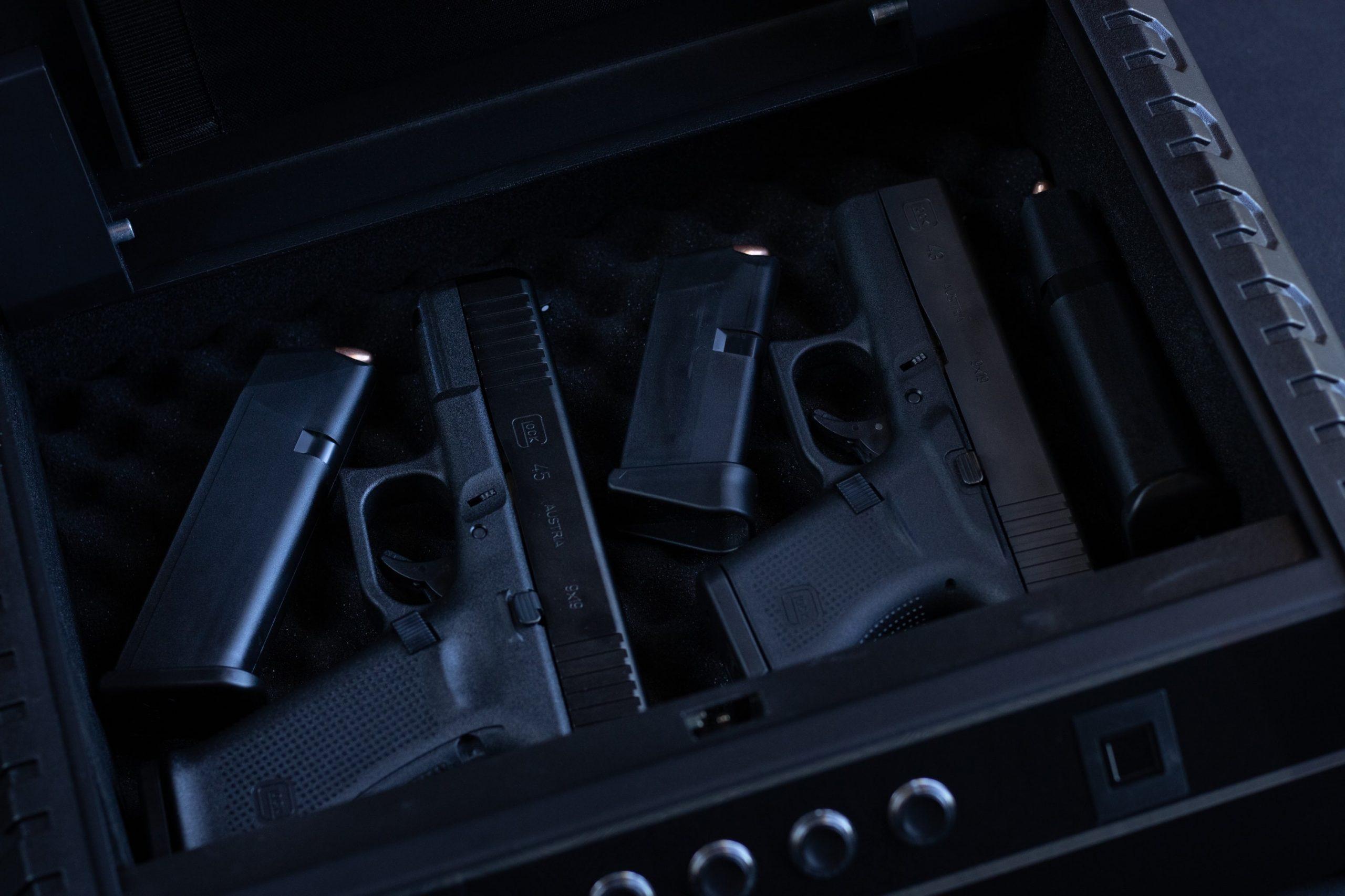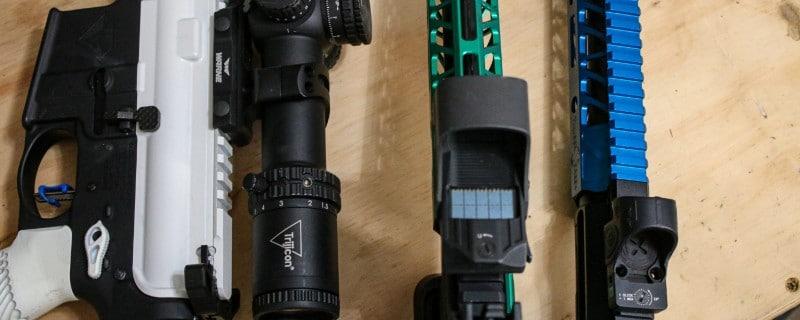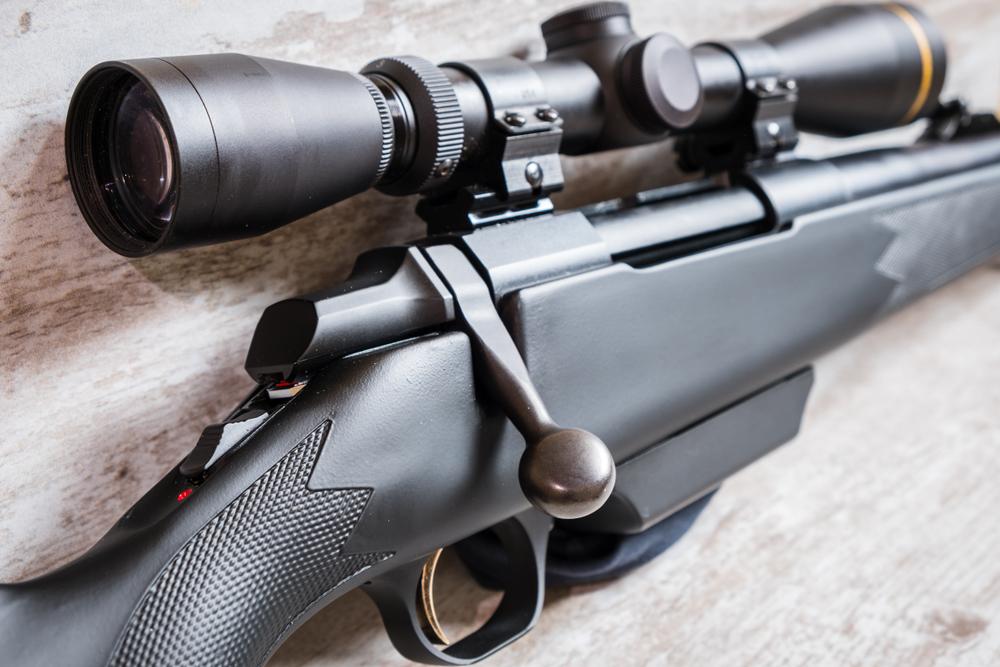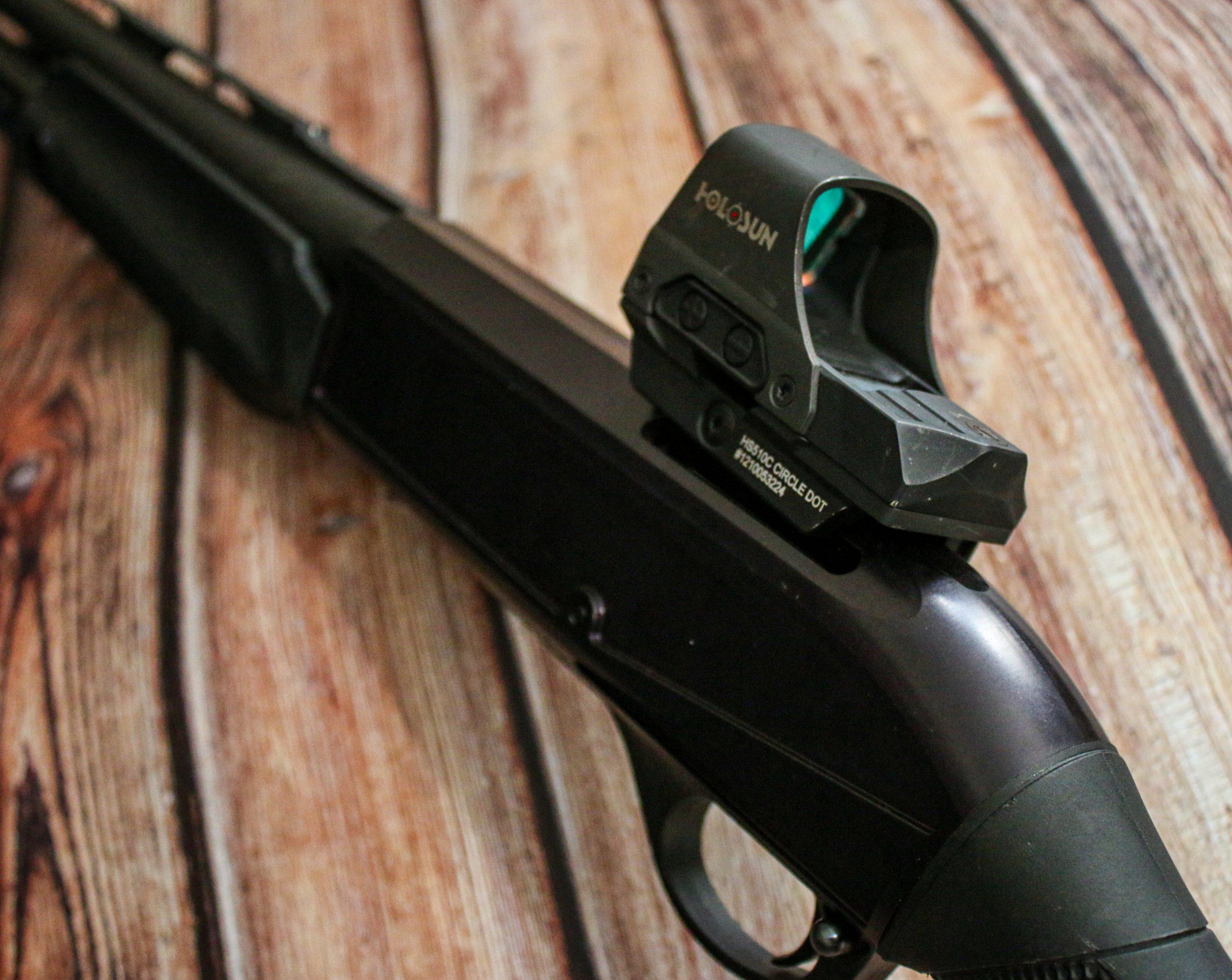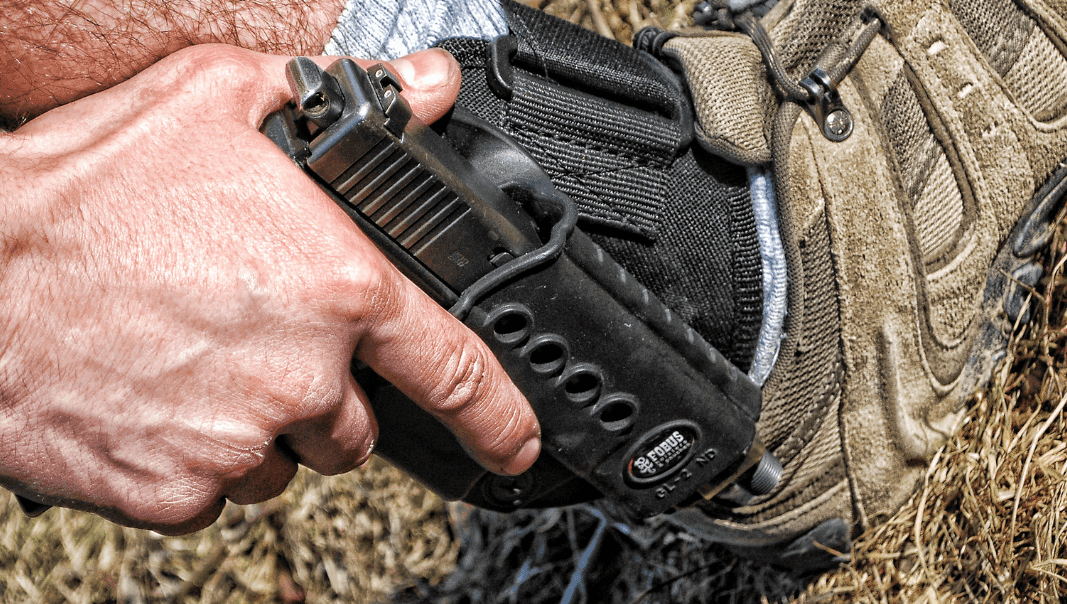Top AR-15 Upper Receivers: Build Your Perfect Rifle
Written By
Michael Crites
Licensed Concealed Carry Holder
Reviewed by
Editorial Team
Learn About The Editorial Team
Share:
Products are selected by our editors. We may earn a commission on purchases from a link. How we select gear.
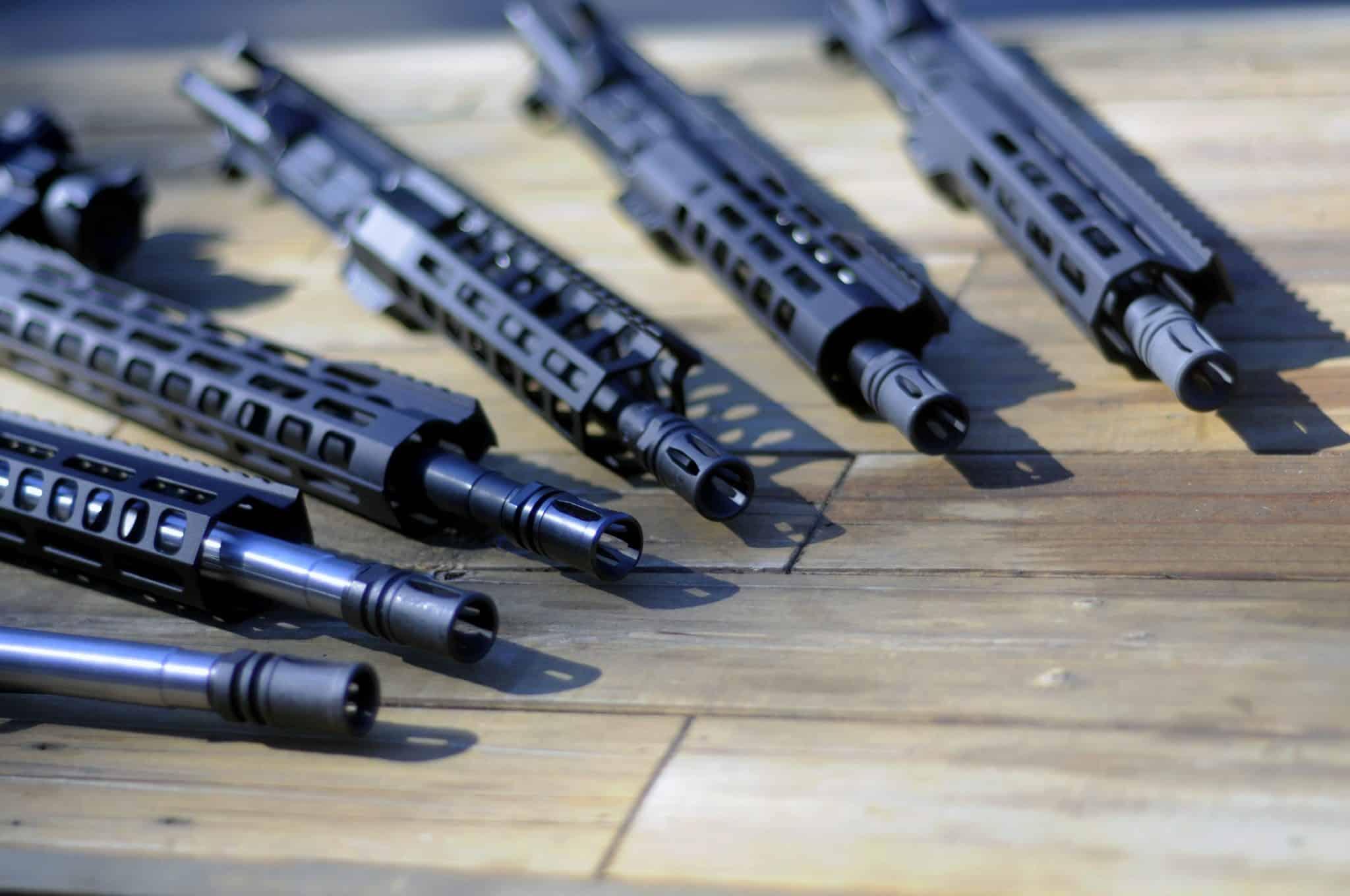
Updated
Jun 2025
Arguably one of the most vital elements of the AR-15 is picking the right upper receiver group. After all, your upper provides the lock-up between the bolt and barrel, leaving you with either an accurate and dependable firearm or something that offers little more than consistent frustration.
If you want to build an AR for precision shooting, general use, or home defense/close-quarters combat, there’s an upper out there for you, but how do you go about picking the best one?
In This Article
How We Picked
Materials
We pair a visual inspection looking for signs of poor welds, loose fittings, or improper finishes, we also assess the materials used in its construction.
Compatibility
We test the upper receiver with different brands and types of handguards, suppressors, and optics to ensure its interchangeability and compatibility.
Functional Testing
We do functional testing, assessing the performance of the receiver under real-world conditions.
Durability
Beyond the materials used, we test durability with longer-term use of an upper.
More on our upper testing
AR-15 Upper Receiver Comparison
Below is my list of the AR 15 uppers selections. I list the best choices in terms of value, performance, design, and cost.
Click on the name to head to the product page, read reviews and check prices or skip ahead to the list of AR uppers. This article is part of our ongoing Guide to Everything AR.
| Upper Receiver | Best For | Price Range | Accuracy (MOA) | Best For |
|---|---|---|---|---|
Budget All-Purpose | $400-500 | 2-3 | First builds backup rifles | |
Value/Customizable | $500-600 | 2-2.5 | Custom builds upgrades | |
Professional/Duty | $800-900 | 2-3 | LEO military duty use | |
Special Ops Inspired | $900-1100 | 1.5-2 | Clone builds tactical | |
Premium All-Around Builds | $1200-1400 | 1.5-2 | Precision hunting versatile | |
Short Barrel/CQB Builds | $1400-1600 | 2-2.5 | CQB home defense | |
Lightweight Precision | $1600-1900 | 1-1.5 | Competition precision | |
Match-Grade Precision | $1200-1500 | 0.5-1 | Long-range competition | |
Alternative Caliber | $1400-1700 | 1-1.5 | Specialized builds |
Accuracy ratings based on quality ammunition. Individual results may vary based on shooter skill, ammunition choice, and environmental conditions.
Why Buy an AR-15 Upper Receiver
Building A New Rifle
Many people buy an AR-15 upper receiver to build a new rifle the exact way they want it. Starting with a quality upper gives you control over every aspect of your build, from the barrel profile to the handguard style, gas system length, and overall aesthetic.
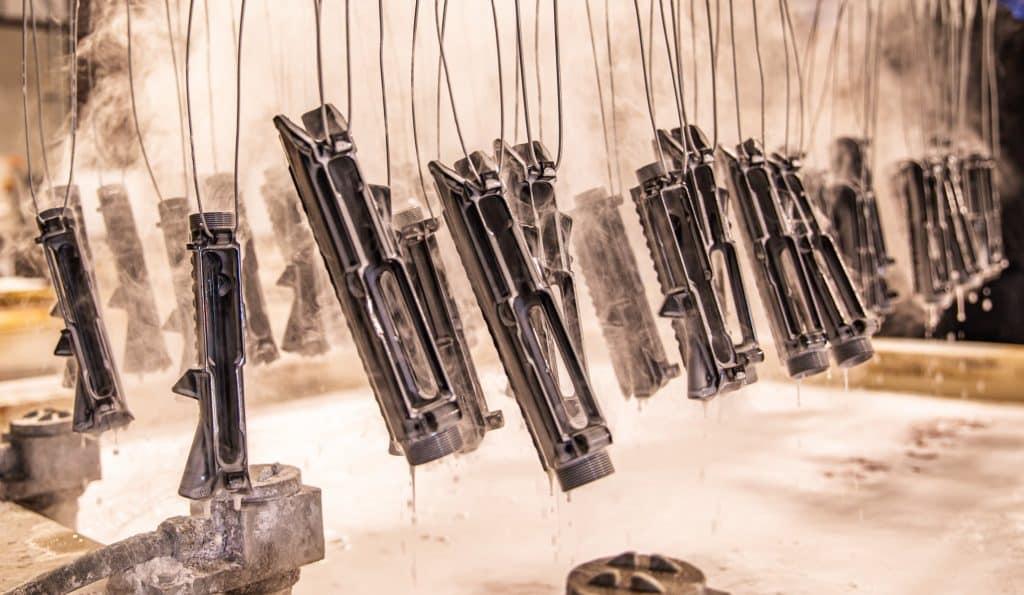
Depending on the route you go, you get to choose the barrel, the look of the gun, as well as the type of operating system, and, ultimately, how the gun will handle.
The modular nature of the AR platform means you can select components that perfectly match your intended use. Want a lightweight build for competition? Go with a pencil barrel and slim handguard. Need something bombproof for duty use? Opt for a government profile barrel with a robust quad rail. Building from an upper receiver gives you this flexibility while often saving money compared to buying a complete rifle and swapping parts later.
These nuanced decisions make buying an upper receiver a popular option for folks who want control of the final product. Starting with an upper of your choice, you can build an AR-15 that perfectly suits your vision and needs.
Adding Functionality to Your Existing Setup
Second, many folks find themselves in the position of already having either a complete lower or a rifle that no longer suits their needs. Rather than selling your current setup and starting over, swapping uppers is an elegant solution that maximizes your investment and helps you get what you need to get out of your rifle.
For instance, if the AR you originally bought had a general-use 16-inch barrel, you might want to try an upper receiver with a longer barrel for precision work at extended ranges. Or perhaps you’re interested in shifting from 5.56 NATO to .300 Blackout for more of a home-defense build or experiment with a short-barrel setup for fun times at close quarters.
That way, you can try out new capabilities without buying a whole new rifle. Your trigger, stock, grip, and other lower components remain exactly as you’ve configured them, while the upper transforms your rifle’s personality entirely.
Economic and Legal Advantages
From a practical standpoint, upper receivers offer significant advantages over complete firearms. Since the lower receiver is the serialized component that legally constitutes the “firearm,” upper assemblies can be shipped directly to you without involving an FFL dealer or paying transfer fees. This saves both time and money — and who doesn’t love getting an upper delivered right to their door?
Additionally, if you already have a quality lower setup with your preferred trigger, stock, and grip configuration, buying just the upper avoids paying for components you already have dialed in. This is doubly true if you’ve invested in premium lower components – why shell out twice when you can simply swap uppers?
Specialized Applications Made Simple
The upper receiver approach really shines when you need specialized capabilities for specific situations. Want to try precision long-range shooting? Swap in a match-grade upper with an 18-20 inch barrel. Planning a hunting trip where a compact rifle would be advantageous? Install a lightweight upper with a 14.5-inch barrel and pinned muzzle device. Same rifle, very different needs.
This modularity extends to caliber changes as well. A single lower can accommodate uppers in 5.56/.223, .300 Blackout, 6.5 Grendel, .224 Valkyrie, and likely whatever new whizbang calibers engineers can dream up in the future. Each caliber brings its own strengths – whether that’s the long-range precision of 6.5 Grendel or the suppressed subsonic capabilities of .300 Blackout.
The AR-15’s modular design essentially allows you to own multiple rifles’ worth of capability while only dealing with the legal and storage requirements of a single firearm. For those of us who appreciate versatility and efficiency (and have shallow pockets) it’s hard to beat this approach.
Whether you’re building your first AR, upgrading an existing rifle, or adding specialized capability to your collection, the right upper receiver assembly puts you in control of exactly what your rifle becomes.
Complete vs. Stripped vs. Rifle vs. Pistol Uppers
Going back to the modularity built into the AR series, upper receivers can be purchased anywhere from bone stock basic – with only the one-piece “stripped” aluminum receiver – up to being complete and ready to install on a lower before heading to the field or the range.
Understanding these distinctions is crucial because each option serves different builders and budgets, while also determining how much additional work and expense you’ll face to get shooting.
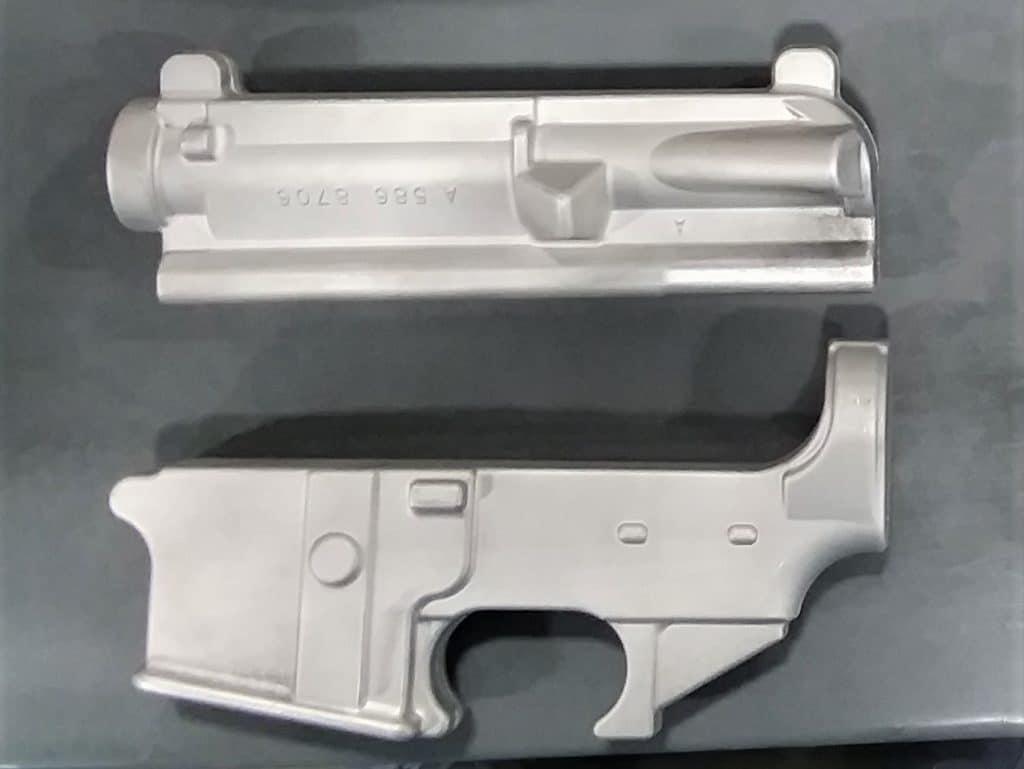
Bare or Stripped Upper Receivers
Many upper receivers will come as the bare receiver, absent the barrel, bolt carrier, or other components. These can be either milled out of a single piece of metal (billet) or forged. Some folks swear by milled receivers, but those that are forged are both usually cheaper and more than durable enough to meet most people’s needs.
The bare receiver will need a bolt, barrel, and all of the other upper parts before it can be put onto a rifle. This approach both saves you upfront costs and makes it more possible to customize the rifle to your exact needs and wants for a particular build.
These range from a bare aluminum blank to a receiver that has been nitride coated and is ready for internal components. For those looking to go stripped, that option can be attractive for fully custom guns in which each part and component is carefully selected – be it for purpose, weight, or cost – mil-spec or otherwise – and used to assemble an AR-15 upper to your exact specifications.
The downside? You’ll need the tools, knowledge, and patience to properly install a barrel, time the gas system, and ensure everything is assembled correctly. It’s definitely doable for a first-time builder, but expect a learning curve.
Complete Upper Receivers
Other receivers come partially complete, but the definition of “complete” varies considerably among manufacturers. Some uppers will include just a barrel and a gas system on the lighter end, letting you customize the bolt, charging handle, and furniture.
Others come even more complete, with the barrel, bolt carrier, charging handle, and all of the components included so that all you have to do is pop the complete upper onto a lower, and then you’re good to go. These are good options for people who don’t have the time or the skills to fit a barrel properly to a receiver, though it can undoubtedly be done even by a first-time AR owner.
For those looking for a more plug-and-play option, a complete upper – one with every component necessary for a functional rifle or pistol – is the way to go as they often just require sights or an optic and marrying to a lower to be range-ready.
Further, due to the economy of scale and resulting deep discounts that gun makers get on bulk parts, complete uppers are usually cheaper than if you were to part out each component, making them a great deal in many cases.
Important note: Pay close attention to what’s actually included. Some “complete” uppers don’t include the bolt carrier group (BCG) or charging handle, requiring you to purchase these separately. Always check the fine print and factor these costs into your budget – a quality BCG and charging handle can add $200-300 to your total.
Rifle vs. Pistol Length Uppers
The distinction between rifle and pistol uppers comes down to barrel length and the legal implications that follow.
Complete Rifle Uppers
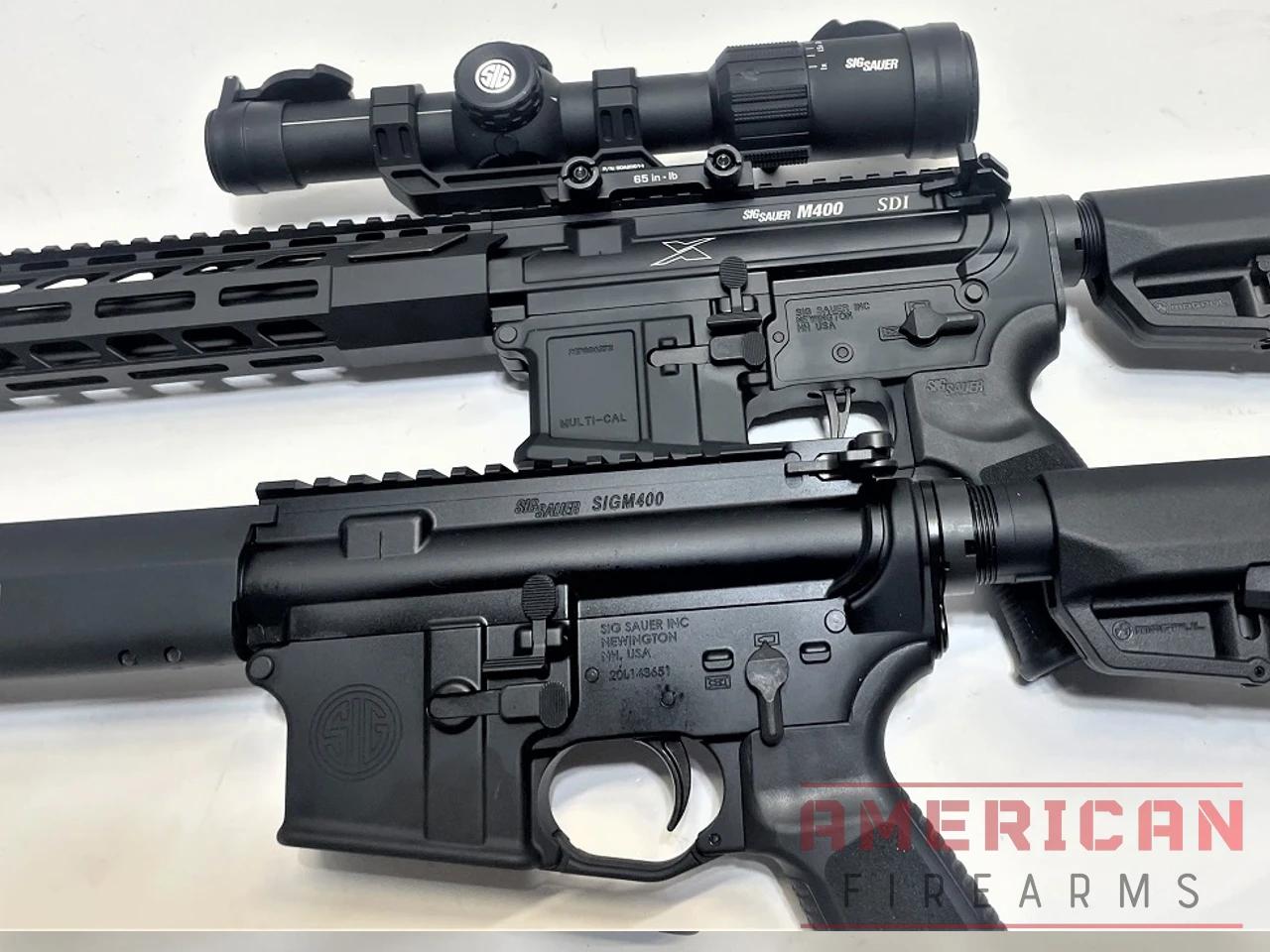
Many completed uppers come with long barrels over 16 inches, making them legal and appropriate for rifle lowers. These are meant to be used at medium to long range and will be what most folks are interested in building. Many of these will also come with a muzzle device from the factory, making the whole building process as simple as pairing the upper to the lower.
The 16-inch minimum isn’t arbitrary – it’s federal law under the National Firearms Act. Anything shorter requires either an NFA tax stamp (for a Short Barreled Rifle) or must be configured as a pistol with appropriate bracing.
Handily, you can typically have rifle upper receivers mailed directly to your home, as they are not, for legal purposes, considered to be the firearm: the lower, on the other hand, has to come from an FFL/firearms dealer at some point.
Complete Pistol Uppers
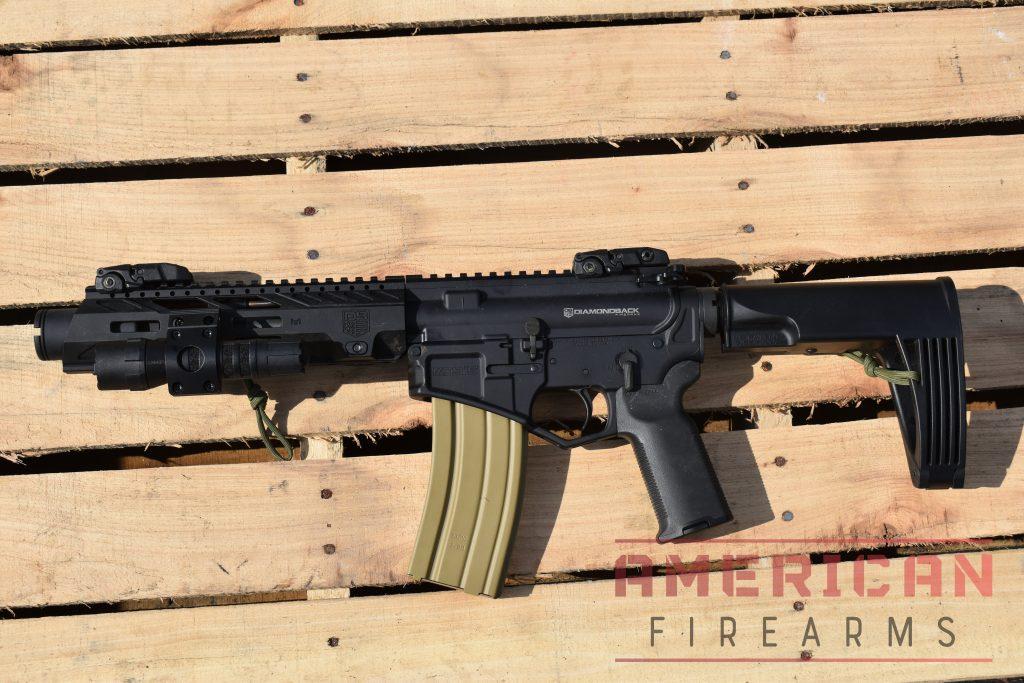
Other uppers are sold with barrels under 16 inches. Though you can have these shipped to your house as well, you need to be aware that these can only be placed on either pistol lowers or rifle lowers that you have registered as a Short Barreled Rifle (SBR).
While it seems like an arbitrary legal hurdle, you cannot get one of these short-barreled upper receivers and put it on a rifle lower without running afoul of the ATF or Law Enforcement. The “constructive possession” doctrine means that simply having the parts to assemble an illegal configuration can land you in legal trouble, even if you never actually assemble them.
Critical legal note: If you have both a short-barrel upper and a rifle lower in your possession without proper paperwork, you could be in violation of federal law. This is serious business that can result in felony charges. When in doubt, consult with someone knowledgeable about NFA regulations.
While we’re not lawyers and certainly not your lawyer, we want to be as cautious as possible with federal law. Understanding the laws and implications of owning or building a firearm is always 100% your responsibility.
Making the Right Choice
The decision between stripped and complete, rifle and pistol length, ultimately comes down to your experience level, available tools, intended use, and legal situation.
Go stripped if: You enjoy the building process, want maximum customization, have the proper tools, and don’t mind the learning curve.
Go complete if: You want to start shooting sooner, prefer proven combinations, or lack the tools/experience for assembly.
Choose rifle length if: You want maximum versatility, don’t want NFA complications, and plan to use the rifle for general purposes.
Consider pistol length if: You need maximum maneuverability, understand the legal requirements, and have specific tactical or defensive applications in mind.
Remember, there’s no wrong choice here – just different paths to get you shooting. The modularity of the platform means you can always add different uppers later as your needs and interests evolve.
The Best AR-15 Uppers
1. Best Entry-Level Upper: Palmetto State Armory
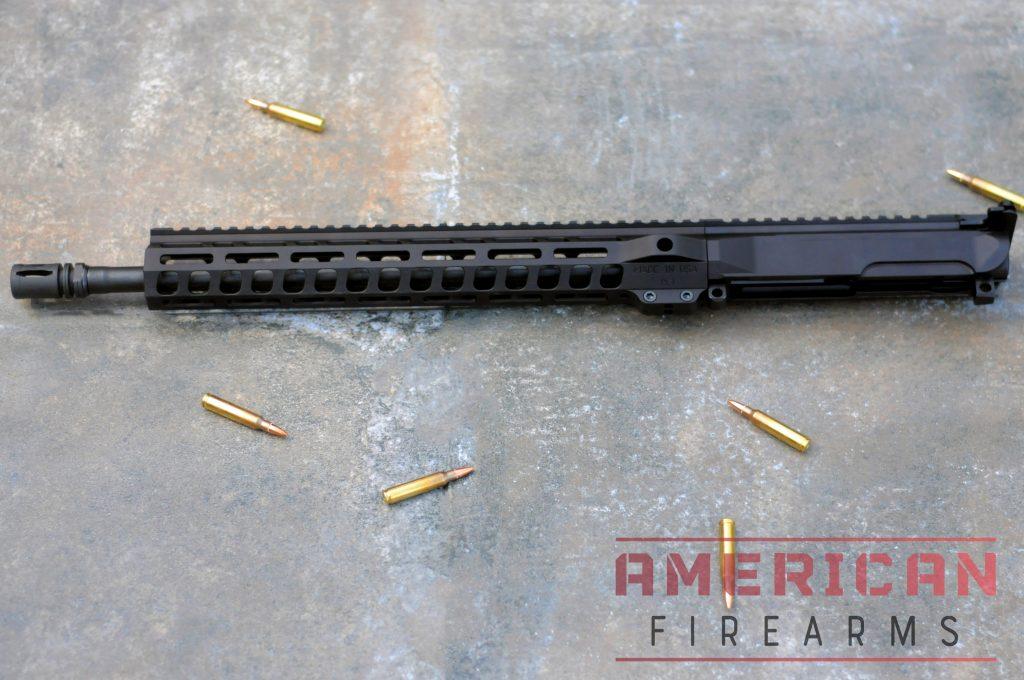
Why it excels in this category:
- Unbeatable value – Complete upper with BCG, charging handle, and sights under $500
- Proven reliability – Author’s personal baseline upper for testing equipment with thousands of rounds
- Complete package – No additional purchases needed to get shooting
- Consistent availability – Deep supply chain ensures stock when others are sold out
- Suppressor compatible – Runs reliably suppressed without short-stroking
- 4150V steel barrel – Quality materials despite budget pricing
Sometimes derided for the fact that they are the master of the low-cost AR, Palmetto State Armory has truly revolutionized the black rifle market in the past decade, offering a respectable product at an exceedingly fair price coupled with a deep supply chain that ensures they are almost always in stock– a rarity in strange times such as these.
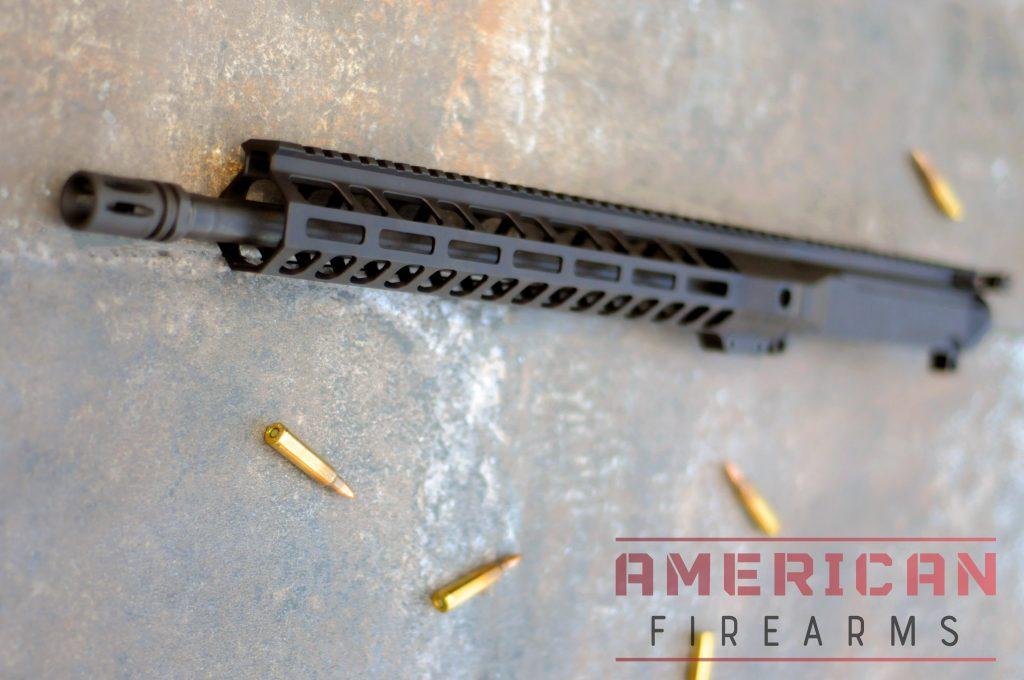
One of their best deals is on their 16-inch PSA M4 5.56 NATO carbine uppers, available in either a 1:7 or 1:8 twist. These come standard with a Magpul MOE handguard and 4150V chrome moly vanadium barrels and a lightweight handguard.
Further, they come complete with at least some sights– Magpul MBUS– and with a full-auto profile BCG included all for typically well under $500.
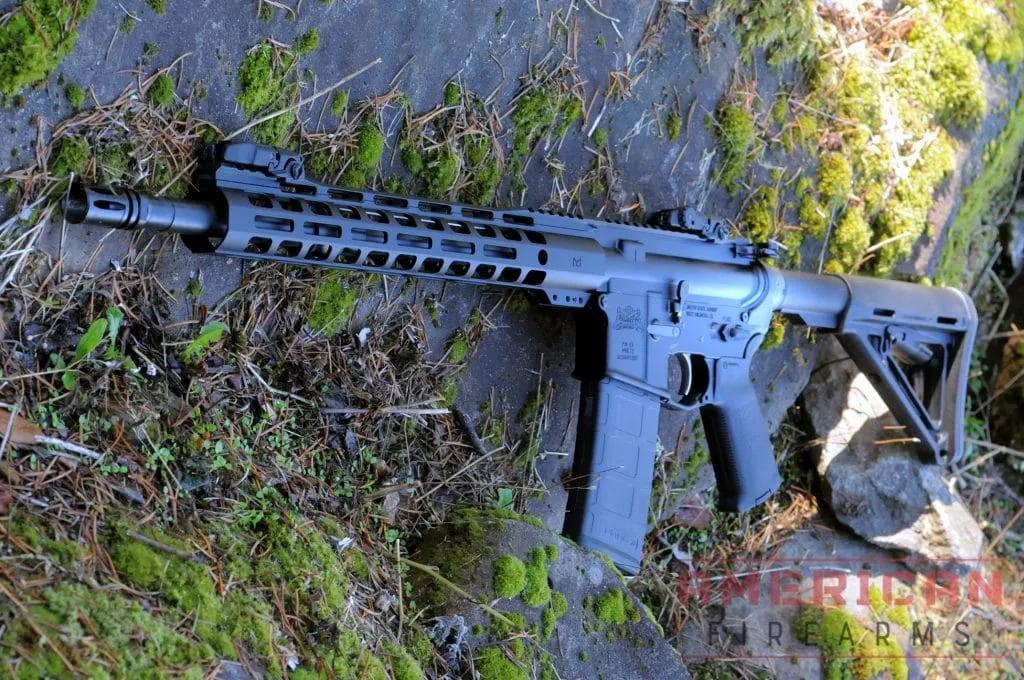
I’ve used the 16-inch upper for years on my PA-15, and it’s always ejected, fed, and performed as expected. In fact, it’s my baseline upper for testing everything from lights to suppressors. I’ve popped various suppressors onto the PSA and it never short strokes or complains one bit.
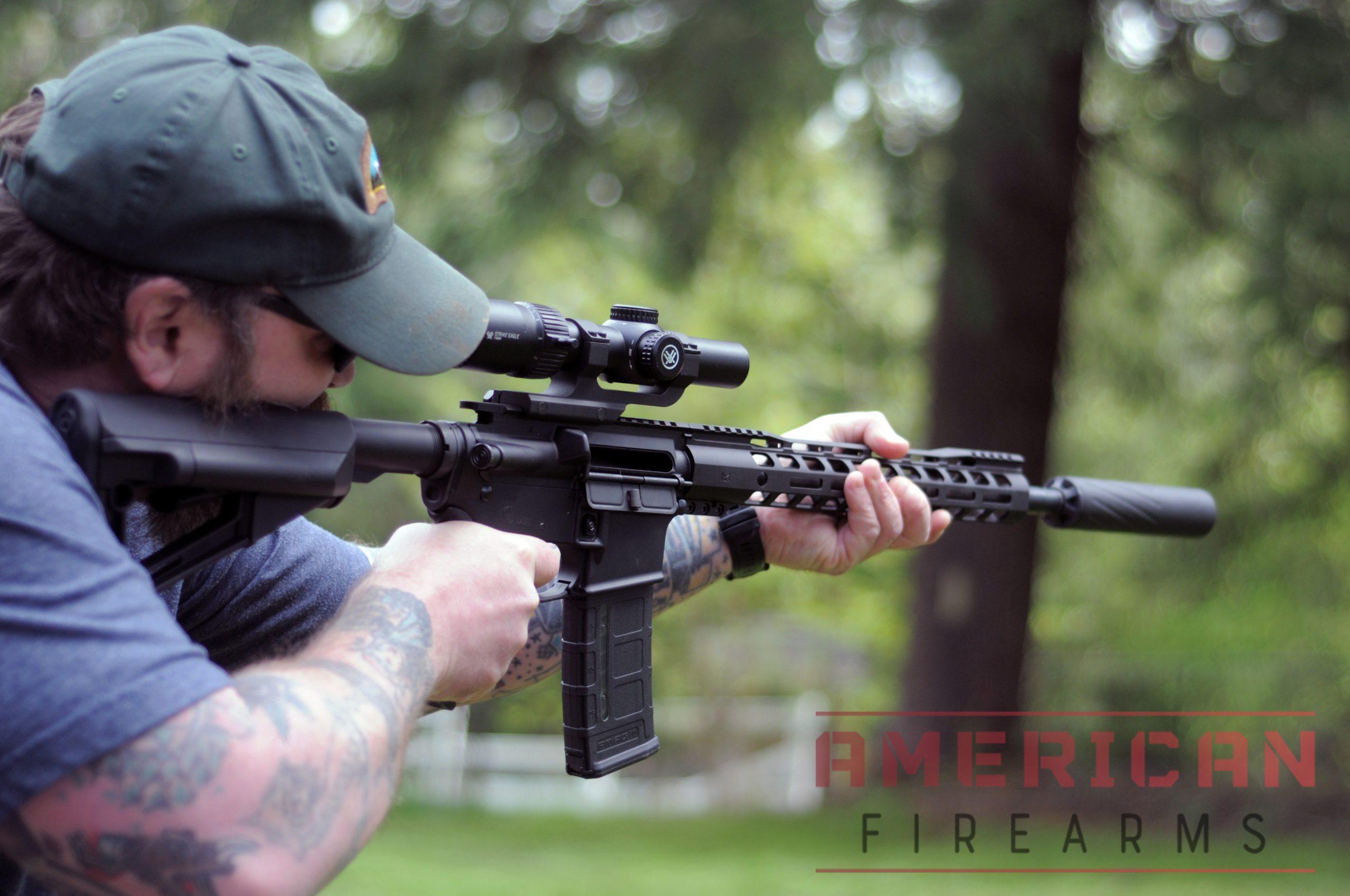
The lightweight upper makes for a very comfortable, balanced feel. Even if the limited Pic rail up top narrows placement options for accessories, it makes for a very approachable rifle.
Sure, the barrel is basic CMV steel with a birdcage up front, but those material decisions help keep the price down. For a basic AR upper that’s going to finish a build or give you another option, PSA offers a hell of a value.
2. Best Value Customizable Upper: Aero Precision
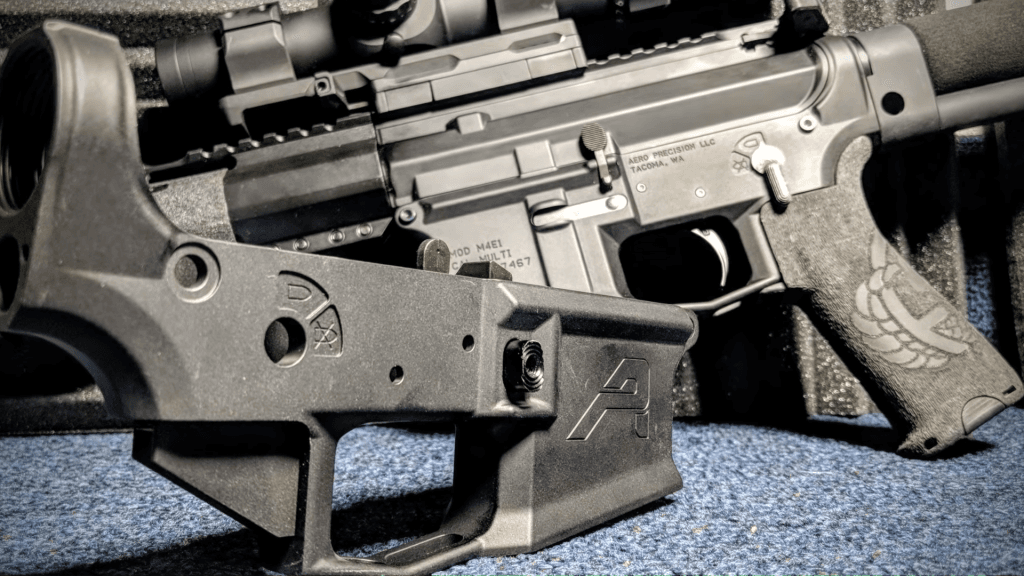
Why it excels in this category:
- Enhanced features at standard pricing – M4 feed ramps and T-marks included
- Novel handguard attachment – Proprietary system for free-floating without traditional barrel nut
- Multiple configuration options – Various barrel lengths, profiles, and handguard choices
- Forged quality – 7075-T6 aluminum construction for durability
- Upgrade-friendly design – Easy to swap components as needs change
- Balanced performance – Good accuracy and reliability foundation for customization
- Strong aftermarket support – Wide compatibility with upgrade parts
With offerings that include stripped, complete and enhanced uppers of all stripes, Aero has something for every AR builder. One of their best deals consistently is on their M4E1 Enhanced upper which has a novel way of securing a free-floated handguard and comes complete with M4 feed ramps and T-marks.
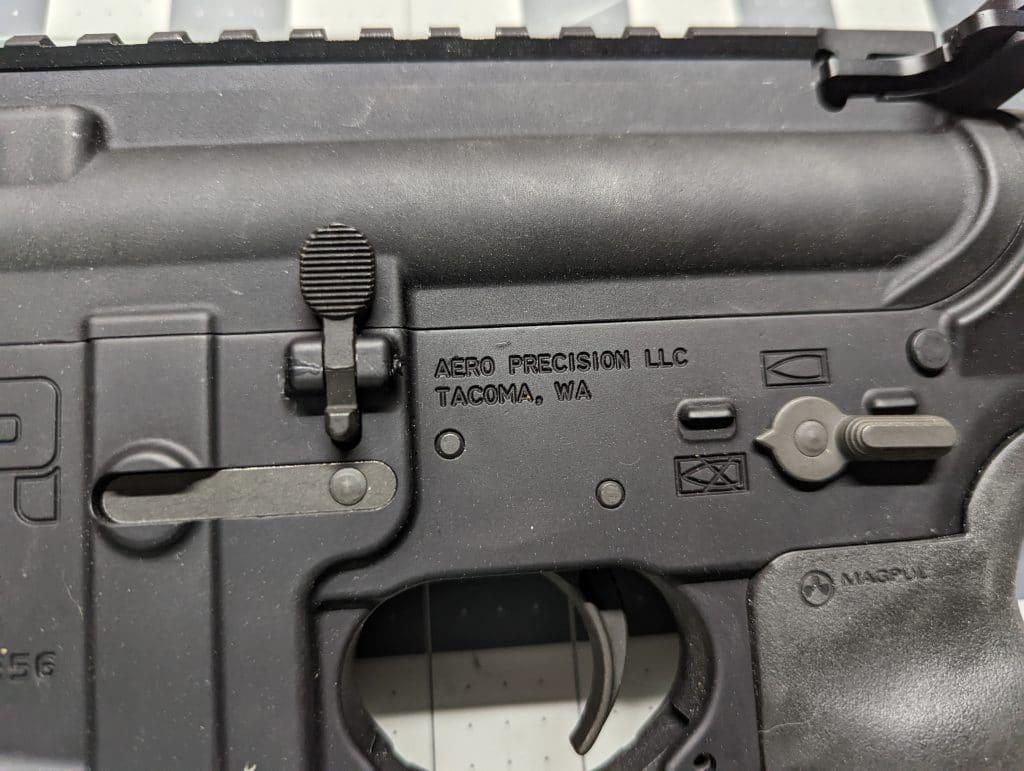
3. Best Professional/Duty Upper: Bravo Company Manufacturing
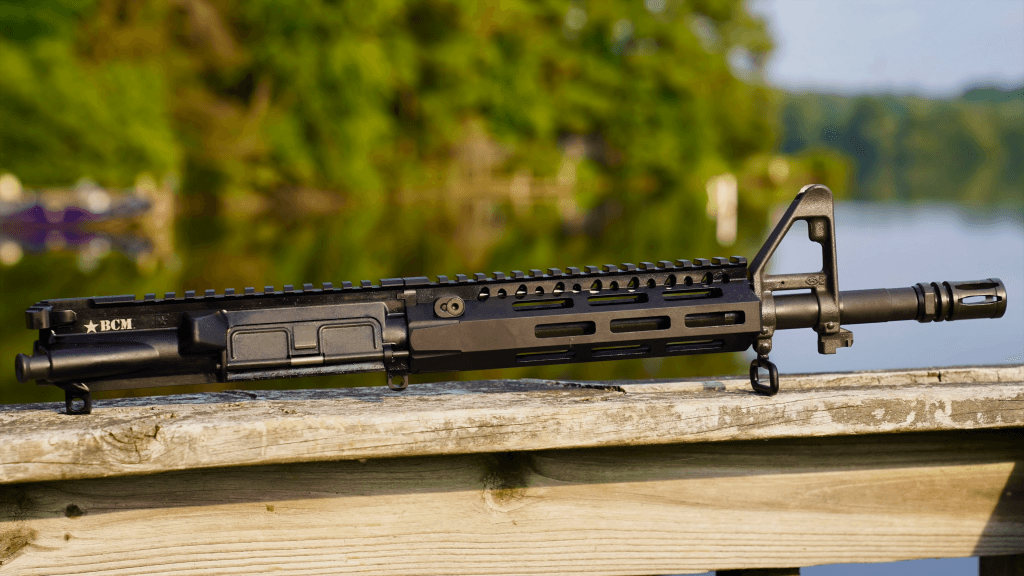
Why it excels in this category:
- Military contractor pedigree – Supplies actual military and LEO units
- Gold-standard BCG – Industry-leading bolt carrier group included
- Battle-tested reliability – Proven in actual combat and duty use
- Kyle Defoor endorsement – KD4 series designed by respected trainer/operator
- SS410 barrel option – Optimized for 77-grain ammunition performance
- Professional reputation – Trusted by serious users who stake their lives on equipment
- Quality control standards – Rigorous testing and inspection processes
- Durability focus – Built for sustained professional use, not just range time
BCM has dozens of upper receiver groups running from short 9- and 10.5-inch pistol uppers to 20-inch rifle models in a variety of calibers. About the most-feature rich of these is their Kyle Defoor KD4 series uppers with SS410 barrels, ideal for use with 77-grain pills.
4. Best Special Operations Inspired Upper: Centurian Arms
Why it excels in this category:
- Naval Special Warfare heritage – Based on actual Recon rifles built for NSW operators
- Proven operational design – Field-tested by elite military units
- Tight tolerances – Precision manufacturing for consistent performance
- Customizable options – Extensive configuration choices to match mission requirements
- 14.5″ and 16″ options – Optimal barrel lengths for versatile deployment
- Operator-driven features – Design influenced by actual end-user feedback
Based on the Recon rifles built for Naval Special Warfare operators, Centurion has been offering models of their RECCE model uppers in either 14.5- or 16-inch barrel lengths for years and it is easy to see why when you look at them.
These things are tight, and the company has a range of customizable options that leaves the buyer with exactly what they want.
5. Best Premium All-Around Upper: Daniel Defense
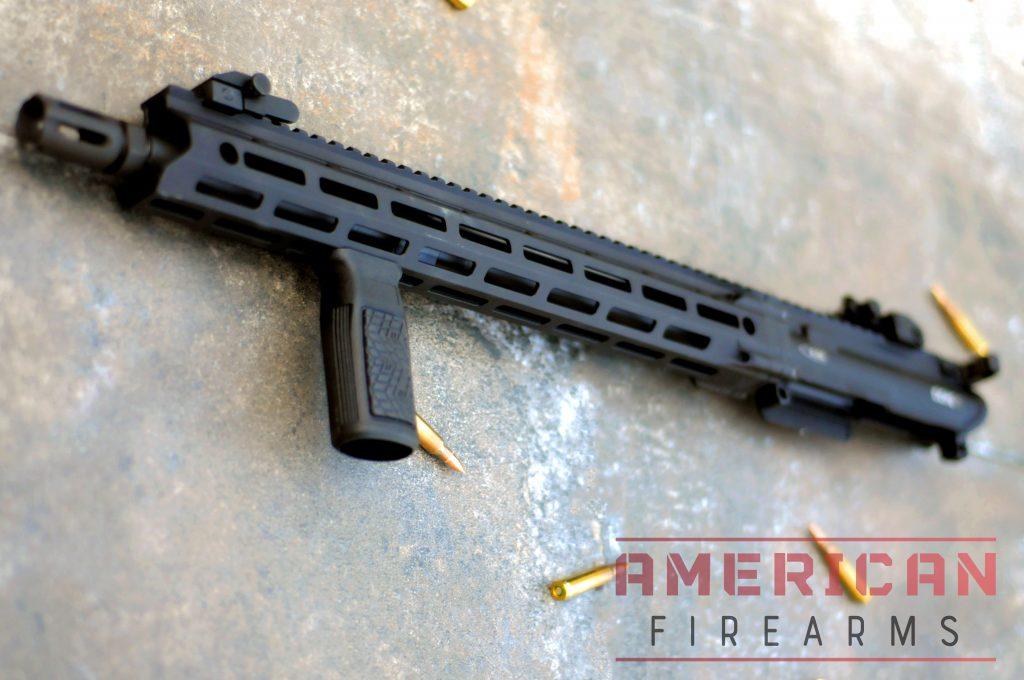
Why it excels in this category:
- Cold hammer-forged barrel – Superior durability and accuracy potential
- MK12 USSOCOM specification – Military special operations proven design
- Low-profile gas block – Reliable rifle-length gas system for smooth operation
- 18-inch stainless barrel – Optimal length for velocity and accuracy balance
- Soft-shooting performance – Rifle-length gas system reduces felt recoil
- Premium materials throughout – High-quality components at every level
- Versatile performance – Excellent for precision, hunting, and general use
- Proven track record – Extensive real-world testing and military adoption
Georgia-based Daniel Defense is a staple in the quality-built AR world and their upper game is on point, offering over 20 complete receivers in both .300 BLK and 5.56 NATO.
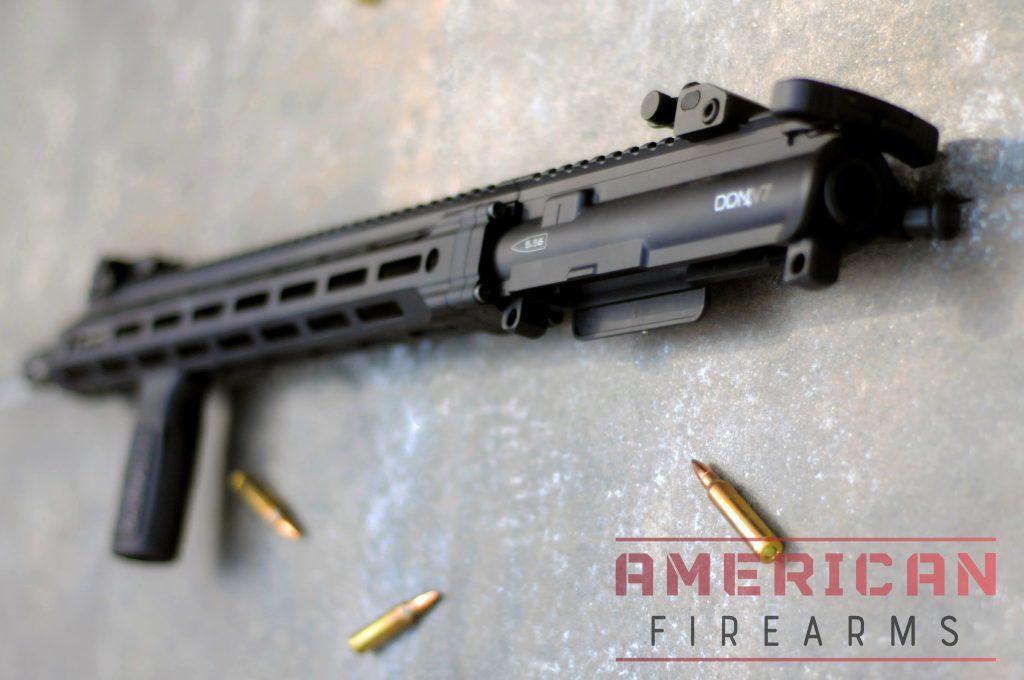
Of these, their MK12, which uses the USSOCOM-spec low-profile MK12 gas block on a soft-shooting rifle-length gas system coupled to an 18-inch stainless barrel, is no slouch. This upper was featured in our hands-on DDM4 V7 review.
6. Best Short Barrel/CQB Upper: Geissele Automatics
Why it excels in this category:
- URGI specification – Based on military special operations requirements
- Geissele engineering excellence – Premium triggers and components manufacturer
- Super Modular Rail MK 16 – Lightweight, rigid handguard system
- Airborne charging handle – Enhanced manipulation for tactical use
- Super .750 gas block – Optimized gas system for reliable cycling
- Bombproof construction – Built to withstand extreme tactical use
- Premium component integration – All Geissele parts work together seamlessly
- Compact maneuverability – Optimized dimensions for close-quarters engagement
Based in the Keystone State, Geissele is a well-known player in the department of AR 15 uppers and their Super Duty models are respected.
Moving past the SDs, which can sometimes be hard to find, the company’s URGI is about as bombproof as it gets, outfitted with all the Geissele bells and whistles from its Super Modular Rail MK 16 handguard to its Airborne charging handle and Super .750 gas block.
7. Best Lightweight Precision Upper: Knights Armament
Why it excels in this category:
- Eugene Stoner’s final innovations – Last home of the AR-15’s original designer
- Lightweight 4.3-pound design – Significant weight reduction without strength compromise
- Round-lug bolt system – Advanced bolt design for enhanced reliability
- 1:7 twist optimization – Ideal for modern ammunition weights
- M-LOK free-floating handguard – Modern accessory mounting with weight savings
- Advanced engineering – Incorporating Stoner’s most refined AR concepts
- Competition-ready accuracy – Precision manufacturing for tight groups
- Reduced fatigue factor – Lighter weight enables longer shooting sessions
Florida-based Knights Armament was significant in the AR world as the last home of Eugene Stoner and they benefited from the famed inventor’s most advanced ideas on the platform.
The company’s upper catalog has several pages with the SR-15 E3 Mod series being one of the most appealing, offering a light 4.3-pound kit with a 1:7 twist barrel, everlasting round-lug bolt, and M-LOK free-floating handguard.
8. Best Match-Grade Precision Upper: LaRue Tactical
Why it excels in this category:
- “Ultimate” designation earned – Designed specifically for maximum accuracy
- Multiple precision calibers – 6.5 Grendel and .224 Valkyrie options beyond 5.56
- Stealth 2.0 M-LOK handguards – Rigid mounting system for consistent accuracy
- Included MBT two-stage trigger – Match-grade trigger included to complete precision setup
- TranQuilo muzzle brake – Recoil reduction for better follow-up shots
- 12-20 inch barrel options – Various lengths optimized for different precision applications
- Texas precision engineering – Known for accuracy-focused designs
- Complete precision package – Everything needed for match-grade performance included
With a name like the “Ultimate” upper, it would seem that Texas-based LaRue is doing a bit of smack talking but it just seems that way.
Offered in four caliber choices including 6.5 Grendel and .224 Valkyrie, the Ultimate includes Stealth 2.0 M-LOK handguards, M4 feed ramps, LaRue’s TranQuilo muzzle brake, an MBT two-stage trigger (to fix up your lower), and barrel lengths from 12- to 20-inches.
9. Alternate Caliber Pick: Noveske
Why it excels in this category:
- 14.5-inch specialized length – Optimal balance for alternative caliber performance
- Stainless steel 1:7 barrel – Premium material for accuracy and longevity
- Mid-length gas system – Proper gas timing for various caliber options
- NSR M-LOK rail – Noveske’s proprietary handguard system
- Geissele Super Badass charging handle – Premium manipulation components
- Dead Air muzzle device – Suppressor-ready with quality mounting system
- Polygonal or CHF barrel options – Choice between different premium manufacturing methods
- Four-digit investment quality – Premium pricing reflects premium materials and manufacturing
- Specialized application focus – Designed for users who know exactly what they want
Noveske isn’t shy about their guns or black rifle components and has always been one of the loudest voices in the AR community, but you can’t fault them on the quality of their products. When it comes to uppers, they have a full selection with the 14.5-inch Gen III Afghan being our personal favorite.
Shipping standard with a stainless 1:7 barrel with a mid-length gas system, NSR M-LOK rail, Geissele Super Badass charging handle, and Dead Air muzzle device, they offer a choice between a polygonal twist or CHF chrome-lined barrel. About the only bad thing we can say about Noveske is the price– we don’t think you can find one of their uppers for an MSRP of less than four-digits, without a decimal point.
Important AR Upper Features
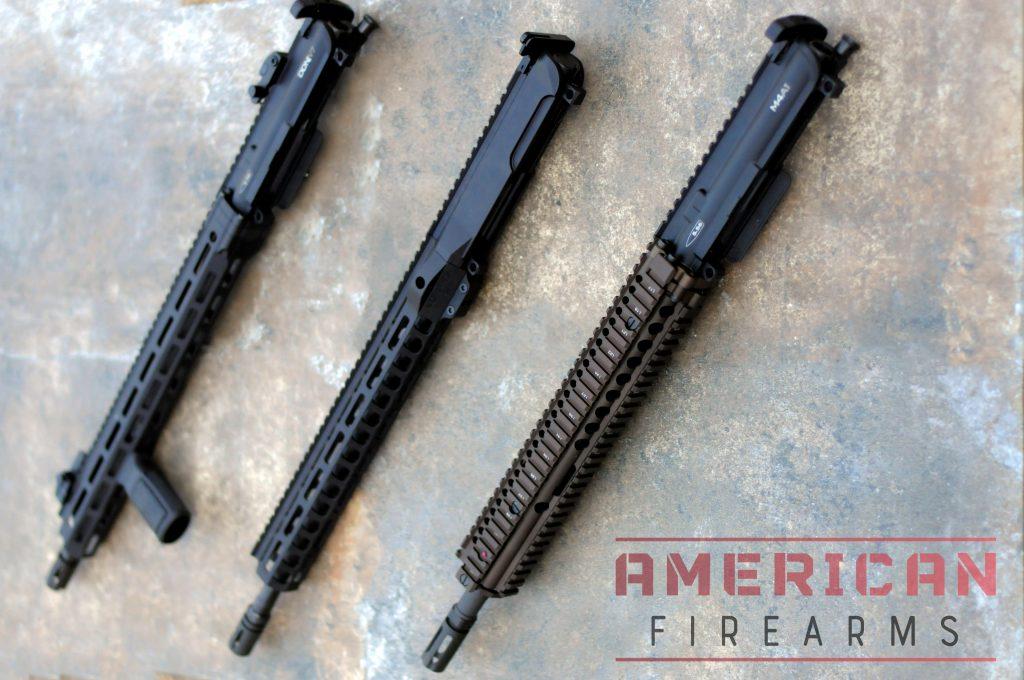
Key in the functionality of Eugene Stoner’s AR-10/AR-15 design, now pushing 70 years young, is the fact that it utilizes a two-piece receiver consisting of an upper and lower element.
The complete upper typically consists of the receiver itself, the barrel, gas system, flash hider, front sight assembly, rail system/handguards, slip ring, ejection port/dust cover, charging handle, bolt carrier group, and forward assist assembly on M4 style carbines.
Lowers, on the other hand, house the trigger assembly, mag well & release, bolt catch, grip, and a whole universe of springs and pins (which can generally be purchased as a single lower parts kit, or LPK)
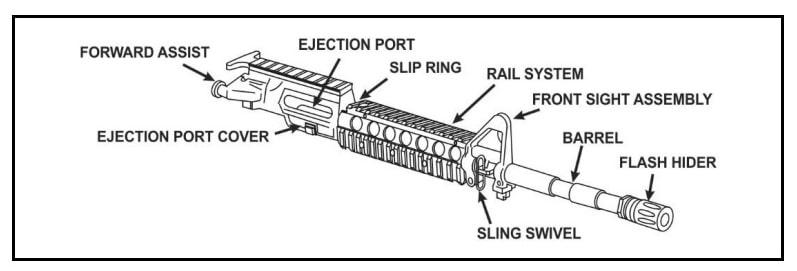
1. Grade of Aluminum
Uppers are almost always made from aircraft-grade aluminum (dating back to Stoner’s original work with the Fairchild Aviation-owned ArmaLite Rifle Company) and typically come in two grades, 6061-T651 and 7075-T651, with the latter being preferred as it is near twice as strong when it comes to tensile and yield strength for very little difference in weight.
2. Billet or Forged
Uppers can be either forged or billet construction, with the first typically being more common (and affordable) and the latter largely in the realm of more custom builds as it has more machining steps to finish.
3. Barrel Length
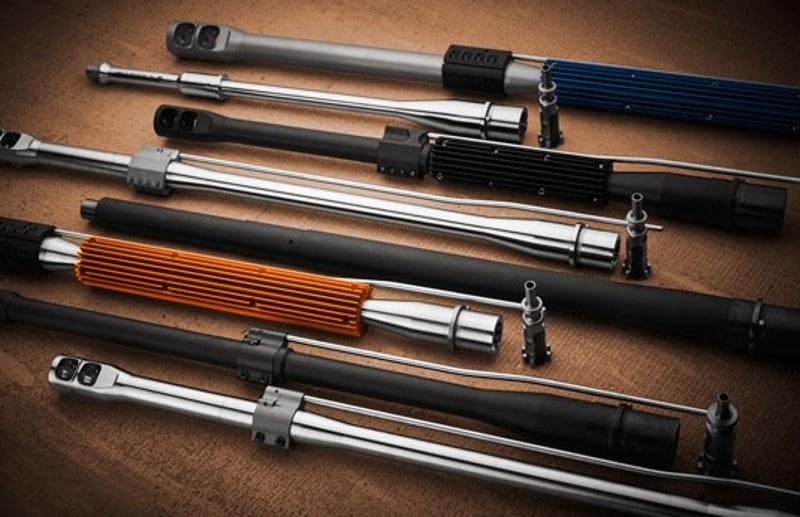
AR-style rifles and pistols are truly modular, enabling the user of one to quickly swap out compatible upper and lower receivers in minutes with little or no tools and completely change the traits of the firearm. Going from a standard 5.56 NATO to .223 Wylde or .224 Valk takes just seconds.
With that, complete ARs, ready to fire right out of the box once function-checked and loaded, can be bought and used then later easily upgraded by swapping out the upper.
The modularity of the AR platform allows for an AR owner to have a single lower– typically the only serialized and controlled part– that will fit an entire shelf of widely different uppers and different barrel lengths, each with a separate purpose.
Likewise, uppers can generally be swapped across several lowers, one of the reasons why ARs are sometimes referred to as “Legos for adults.”
Taking it a step further, home builders/assemblers can start simply with a stand-alone lower receiver and add their selected AR-15 complete upper receiver of choice.
4. Gas system or piston
Stoner designed the AR-15 platform to utilize a direct impingement gas system to cycle the action, and all this magic takes place within the upper receiver. Beyond the below, if you want more on the world of AR gas systems, check out our gas system explainer.
Gas Guns
The concept is straightforward – bleeding off a portion of the spent gas from the fired cartridge through a small port in the barrel to a gas block and from there back to the bolt carrier’s gas key along a gas tube that runs atop the barrel, working the bolt.
This method is reliable, is standard for most uppers and builds, and has been in service for generations. However, it is also kinda dirty, as it throws burnt propellant gasses and bullet particles back into the action, in effect fouling the system a little bit with every shot.
The basic operation of a classic Stoner-engineered AR direct impingement gas system
Piston guns
Piston guns, substituting a short gas piston and operating rod at the gas block for the gas tube and gas key of Stoner’s original design, are a newer trend in the AR world.
On the upside, since the op rod cycles the bolt into the receiver, less hot gasses, and particulates are pushed into the chamber, leaving a cleaner gun which tends to be more reliable in operation, especially when used extensively without cleaning.
On the downside, piston AR 15 uppers are more expensive and require a piston-specific bolt carrier group to work, limiting the choices on BCGs for those who select to drop the gas.
A piston-based AR upper is cleaner and more reliable, but more expensive and requires a piston-specific BCG.
5. Gas system length
With AR-15 barrels running from carbine-length 16-inch to 24-inches for precision rifles and down to 6-inches on pistols, there’s a huge number of variables at play – all with specialized gas systems, different gas port sizes, and tube lengths to make each gun run.
Rifle, Mid, Carbine, or Pistol Length?
Which gas system length is right for you? That all depends on the length of your barrel and the intent behind your gun. Here are the 4 most common gas system lengths.
- Rifle-length Gas Tubes. Designed for barrels 20-inches and up, these typically have a .093-inch port and companion gas block 12 inches down the length of the barrel. When it comes to wringing the most out of the round, especially when using heavy bullets such as 77-grain loads in 5.56, the rifle-length system is ideal offering softer felt recoil with the chunkier rounds.
- Mid-length Gas Systems. Designed for 14- to 20-inches in barrel length with a .0625-inch or larger port 9-inches down the barrel. For general purposes, mid-length gas systems are preferable for most uses as they have a healthy dwell time and lower gas port pressure while providing ample handguard accessory slot real estate and a decent sight radius.
- Carbine-length Gas Systems. Cutting down even further, the carbine-length system works for 10-to-18-inch barrels, but opens the gas port up sightly over mid-length systems at .070-inch and are run 7-inches down the barrel.
- Pistol-length Gas Systems. For barrels under 10-inches in length, these generally include a .070-inch port at least 4-inches down the barrel.
The shorter you go – into the carbine, pistol, or hybrid dissipator lengths – the more you start shedding performance while simultaneously ramping up a more rowdy – and less reliable – shooting experience.
These factors cause many to set these systems aside as more range toys than functional platforms, at least where 5.56 NATO is concerned.
Of course, gas port size varies by the manufacturer as each tries to chase down the double-edged sword of consistent reliability without wickedly over-gassing a rifle, but that’s a subject for another day…
Gas System & Barrel Length Quick Reference
| Barrel Length | Recommended Gas System | Dwell Time | Best Applications | Recoil Feel |
|---|---|---|---|---|
10.5"-11.5" | Carbine | Short | CQB Home Defense | Sharp |
14.5"-16" | Mid-Length | Optimal | General Purpose Duty | Smooth |
18"-20" | Rifle-Length | Long | Precision Long Range | Softest |
6. Rail Space
A final feature that I consider carefully when looking for an upper is the kind of rail space that it affords. Nowadays, almost all uppers come with a full-length Picatinny rail on the top, and I think that’s the way to go. Even if you don’t bother with a handguard that offers another type of rail system, I like being able to put an optic in a variety of locations.
If you want to go for a more historical build with a carry handle, though, it might make some sense to get an old-school A1 or A2 upper that’s a reproduction of a historical model with an integral carry handle.
Legal Considerations
Do AR uppers require an FFL or other ATF red tape?
To stay legal and in compliance with the National Firearms Act, rifles must have a minimum barrel length of at least 16-inches. Many manufacturers bill their carbines as having 16.1 or 16.5-inch barrels just to have a skosh of extra insurance to keep ATF and Law Enforcement screeching harmlessly from the trees.
There is, however, a tendency from some AR makers to market uppers and all-up carbines with 14.5-inch barrels targeting the M4 upper/home defense arena but with a permanently attached muzzle device or barrel extension to make up the difference and reach that 16-inch threshold.
SBRs & ATF Forms
If you want to go shorter than that, you can get an NFA-registered short-barreled rifle (SBR) AR, either outright through a Form 4 or make one with an approved Form 1, or settle for an AR pistol which has its tradeoffs.
Be incredibly careful when it comes to having a pistol-length AR upper and an AR carbine/rifle lower without a stamp and proper paperwork. See “constructive possession” for more info on that as we are not lawyers and none of this constitutes legal advice (we are, after all, just monkeys randomly pounding keys on a keyboard).
Understanding the laws and implications of owning or building a firearm is always 100% your responsibility. Want more? Check out our AR barrel explainer.
Legal Requirements by Barrel Length
| Barrel Length | Legal Status | Requirements | Lower Type Needed |
|---|---|---|---|
16"+ inches | Rifle | None | Standard rifle lower |
14.5" + pinned device | Rifle | Permanent muzzle device | Standard rifle lower |
Under 16" | Pistol | Pistol brace only | Pistol lower or virgin lower |
Under 16" | SBR | $200 tax stamp + ATF approval | Any lower with approved Form 1/4 |
A1, A2, A3, A4 Upper Nuances
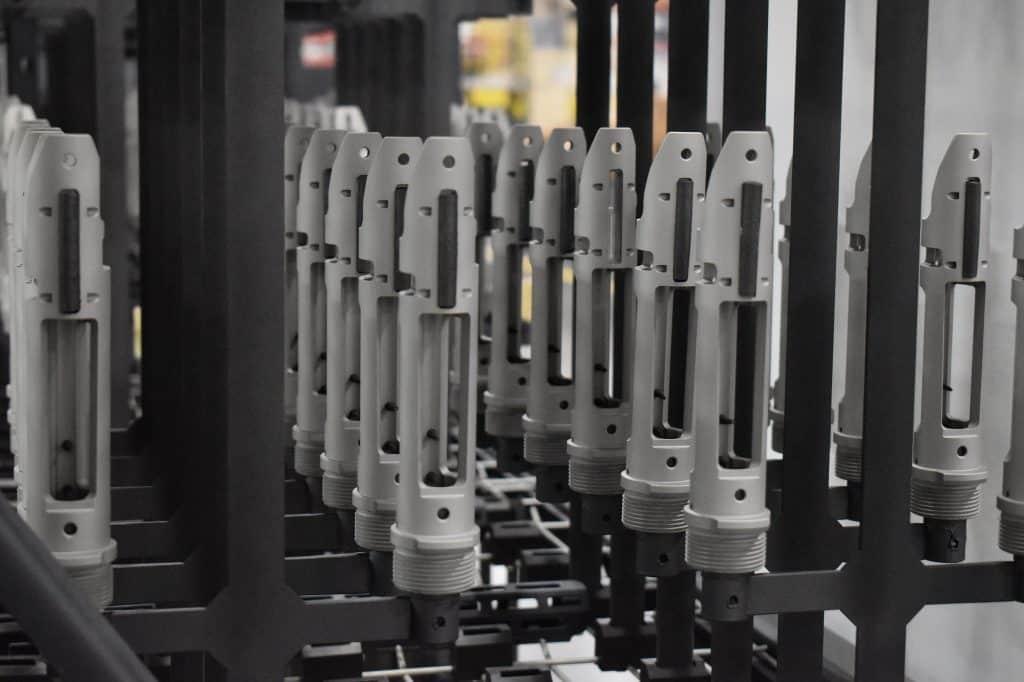
When shopping for upper receivers, keep in mind that there are four recognized generations; A1, A2, A3, or A4. While damn near every new-in-box AR rifle and pistol in your LGS will come with an A3/A4 (or “flat-top) upper, it can be helpful to understand the differences between the various upper generations. Hell, you may even get the retro AR bug one day, and an A4 won’t pass muster on a build like that.
Let’s dive in.
“Old school” A1 and A2 Uppers
The original “old school” A1 and A2 uppers have an integral carry handle at the top (12 o’clock) position of the receiver that includes the rear sight assembly. You will still see classic A1/A2 uppers on rifles used in recent training stills from the various branches — partly because they still work and partly because Uncle Sam has stacked these suckers deep and cheap.
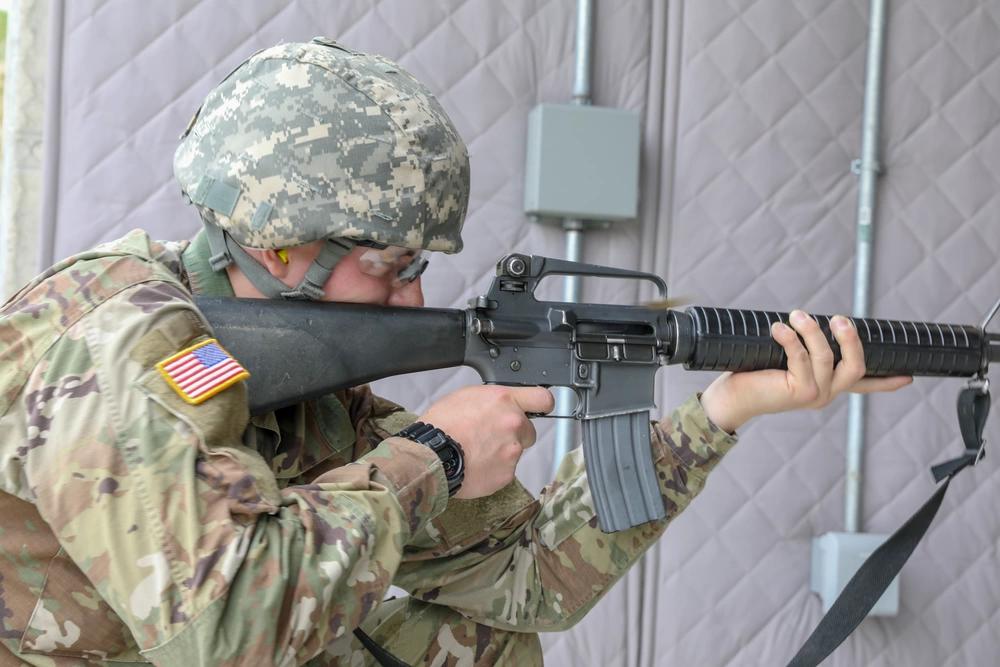
Other than the sights, the primary differences between the two, when found in a complete receiver, is that an A1 will have Vietnam-style triangular handguards with a “sawtooth” ridge on top while the A2 will typically have rounded thermoset handguards. Also an original A1 will lack the triangular brass deflector behind the ejection port. This is partly why they are referred to as “slick side” uppers (along with the absence of a forward assist).
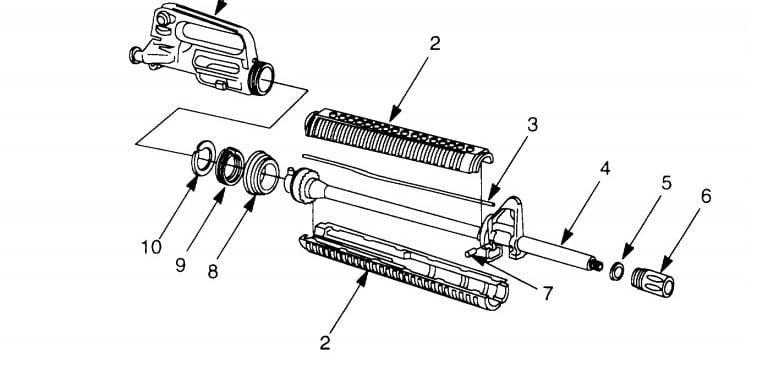
A recent example on the retro front, Brownells has been marketing retro AR uppers and rifles, like their 601, with a slick-sided pre-A1 setup lacking a forward assist and brass deflector on the receiver.
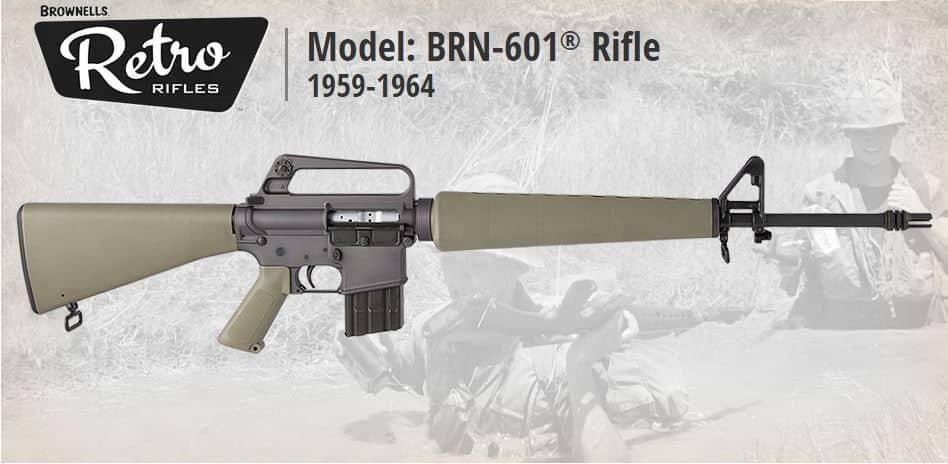
A3/A4 “Flat-Top” Upper Receivers
The new standard in AR uppers, modern commercial A3 and A4 upper receivers are much more functional than their A1/A2 grandparents, replacing the carry handle with a flat top Picatinny rail for sights and optics– or even a removable carry handle if irony is your thing.
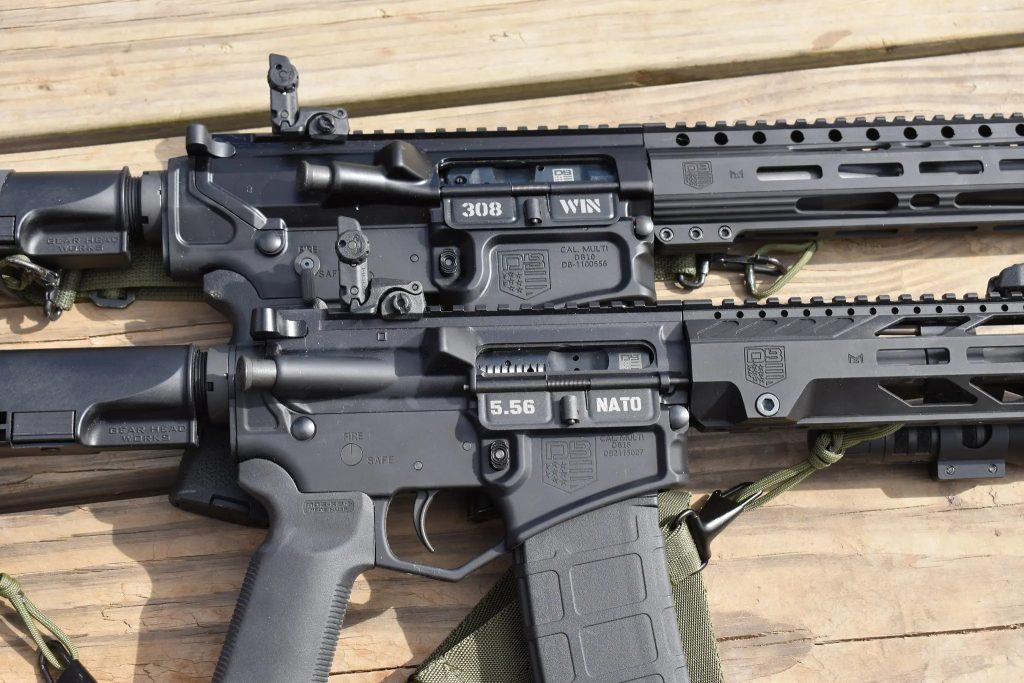
The difference between the two is that the A4 has M4-style extended feed ramps, which are better when it comes to reliability. These days, except for DCM style full-length uppers, most current A3s and A4s use a free-floating handguard with some sort of accessory slot or rail system.
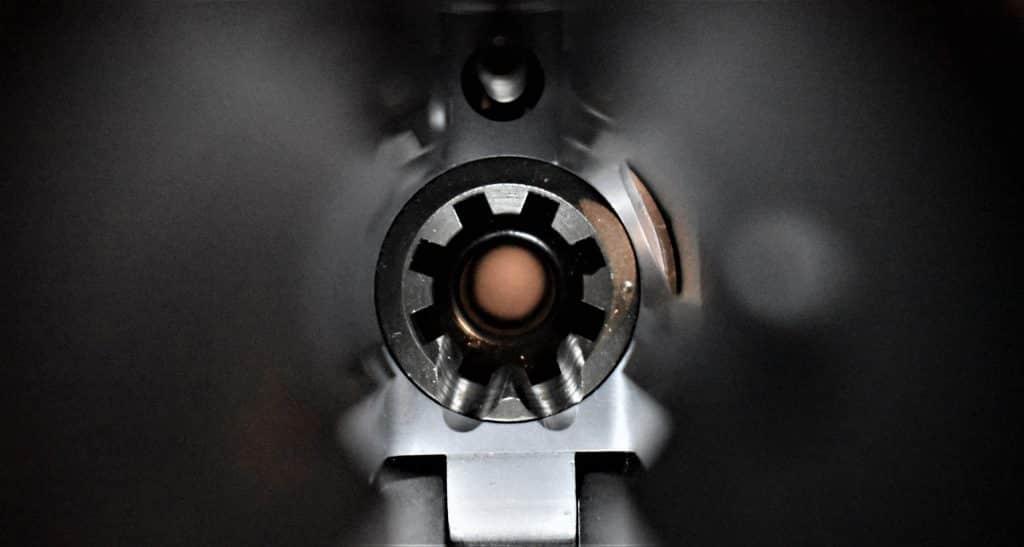
AR-15 Upper Receiver Pricing
- $100-$150: For about $100, you can expect to get a bare lower receiver that is well-made and ready to accept a barrel. Almost all uppers in this price range will include a full flat-top Picatinny rail up top but may not come with many other features or components such as a barrel or bolt carrier at this price range. You’ll see brands like Stag Arms, Anderson, and PSA in this price range.
- $200-$300: Over $200, you’re in the territory of a AR 15 complete upper receiver. You’ll start with a basic barrel and muzzle device with fairly standard furniture in this price range. Rifles in this range can be great all-around performers and are an easy way to flesh out your burgeoning rifle or pistol build.
- $300-$400: Over $400, now you’re talking premium AR 15 complete upper receivers. These will come with cold hammer-forged barrels, premium bolt carriers, better muzzle devices, and high-end furniture. Ideally, you can pair this upper with an existing lower to construct a rifle that is better than previously configured.
As you can see, it’s possible to build a rifle, both upper and lower, at a relatively reasonable price with all the features you want.
It’s also more than possible to find an upper with specific qualities if the build you’re going for has a particular purpose or you want to build a retro rifle.
So, which one?
Without letting the cat of the bag, pretty much any upper will do the job. They all attached to the lower, steady the barrel, give the bolt and carrier a home, and let you charge the action and spit spent brass.
The question is best answered by a separate question: what do you want your rifle to do?
If optics are in your future there’s really no reason to go with anything other than a flat-top. If you plan on building a retro AR but want an adjustable rear sight, an A2 will fit the bill. Don’t care about optics or adjustable sights — or just want the old-school cool? An A1 is going to do all that and more.
The next move is yours.
More Reading
- Reddit, Guns are just Legos for adults
- Bravo Company USA, BCM AR15 Kyle Defoor KD4 Upper Receiver Groups
- NRA-ILA, National Firearms Act (NFA)
- Bureau of Alcohol, Tobacco, Firearms, and Explosives, National Firearms Act
- Stroleny Law, P.A., Gun Possession: Actual and Constructive
- Bureau of Alcohol, Tobacco, Firearms, and Explosives, Form 4 – Application for Tax Paid Transfer and Registration of Firearm (ATF Form 5320.4)
- Wikipedia, Infinite monkey theorem
- Bureau of Alcohol, Tobacco, Firearms, and Explosives, Application to Make and Register a Firearm
- Metal Supermarkets, What are the Differences Between 6061 and 7075 Aluminum?
- YouTube, How An AR-15 Rifle Works: Part 2, Function
- YouTube, Adams Arms Piston System Animation
Coming Soon
June 16, 2025 — Reorganized article structure for better user flow and added category-specific recommendations for each upper receiver. New performance comparison table and specialized sections for installation guidance and legal requirements make product selection much easier for buyers at all experience levels.
Sign up for our newsletter
Get discounts from top brands and our latest reviews!

